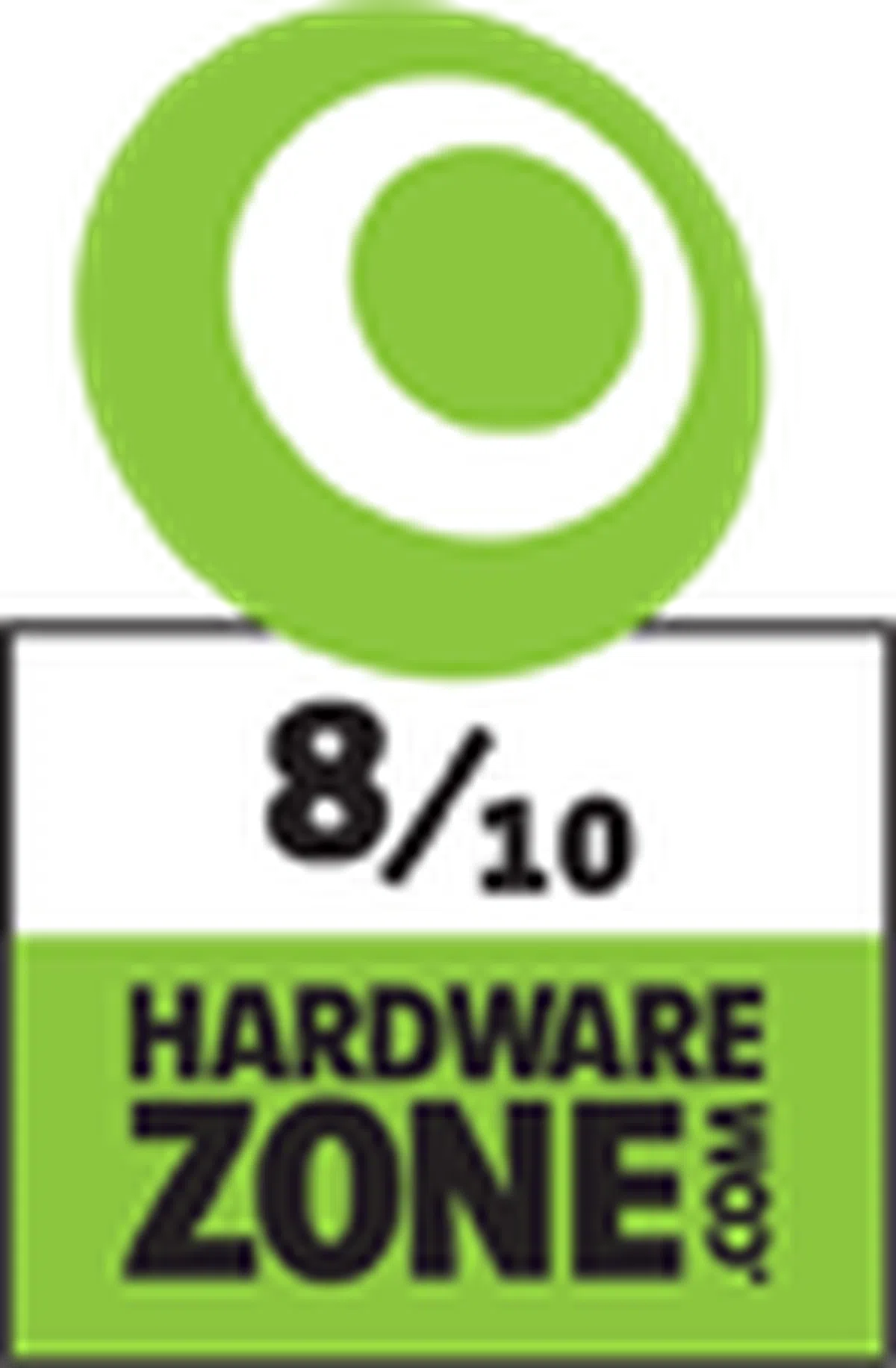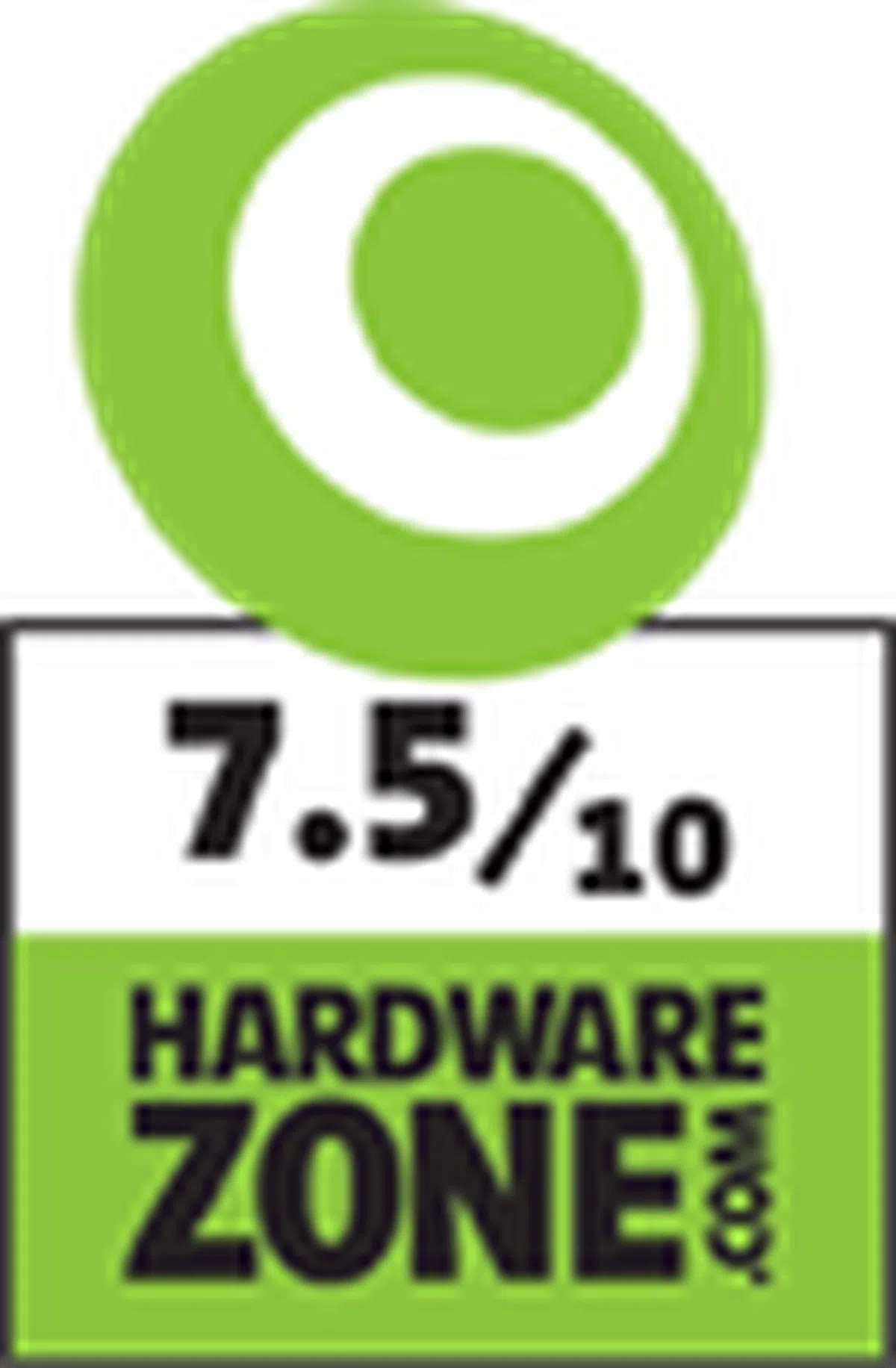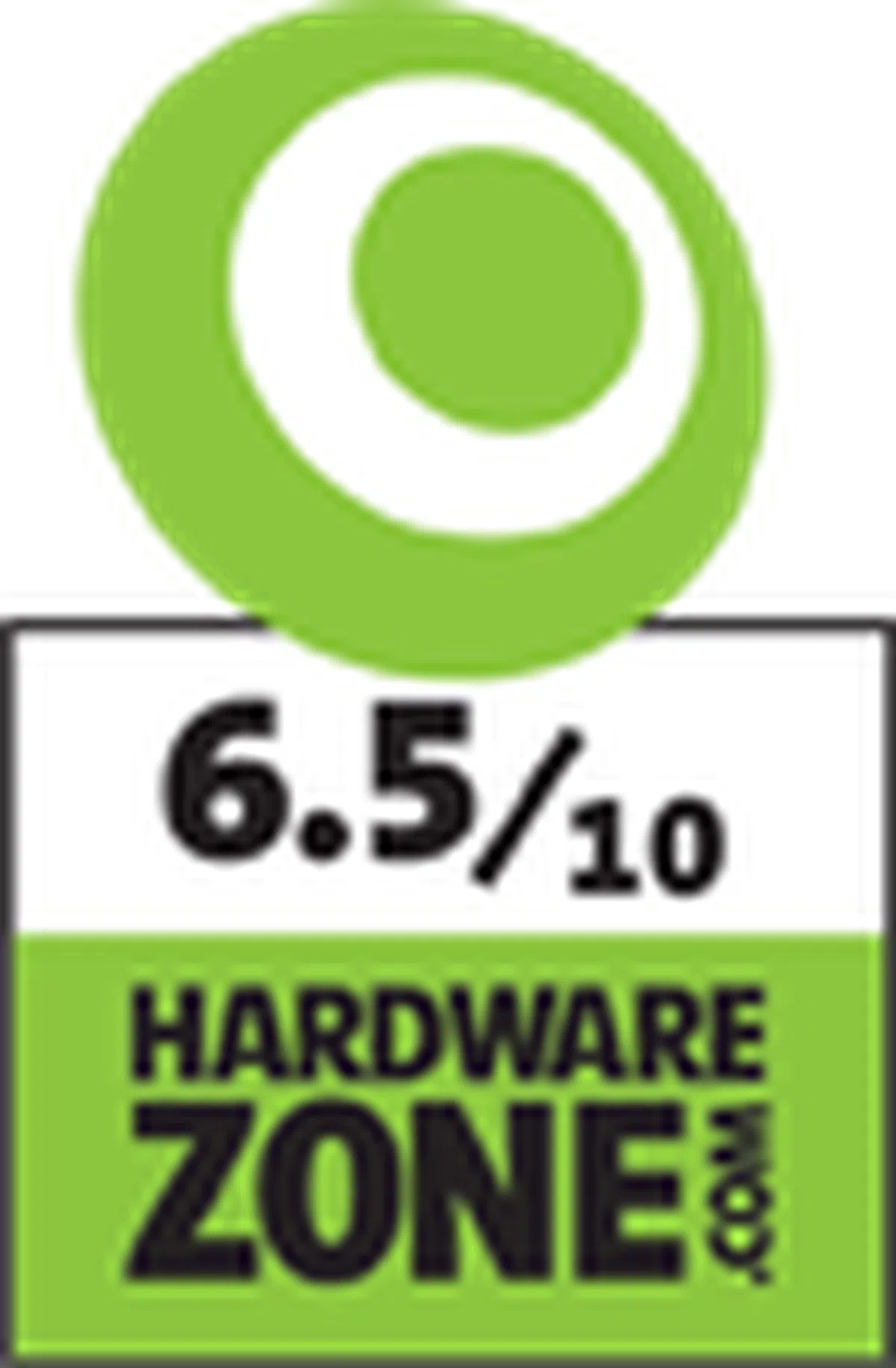Shootout: Compact 4G LTE Smartphones under S$600 (mid-2014)
Smartphones with 4G LTE connectivity are easily available today. They come in various screen sizes, hardware specs, software and more importantly, across a range of price points. We round up six phones from the likes of HTC, Huawei, LG, Motorola, Nokia and Sony whose screen sizes are below 5 inches and put them through their paces. Find out who's the leader!
4G Goes Mainstream
A year ago, we compared five 4G LTE smartphones below S$600 in an epic shootout which saw the Samsung Galaxy S4 Mini emerged as the winner while the Nokia Lumia 820 clinching the Best Value Award.
Today, the market is flooded with so many devices touting 4G connectivity with different specs and form factors at various price points. It's hard enough for tech enthusiasts like us to keep track of all the variants, what more for consumers? Bearing that in mind, we decided to take a look at notable mainstream phones in the market and how they fare. For this comparison article, we narrowed down mainstream 4G smartphones with two criteria: display sizes below 5-inches and priced below S$600.
We ended up with six compelling smartphones - the HTC Desire 610, the Huawei Ascend G6 4G, the LG G2 Mini LTE, the Motorola Moto X, the Nokia Lumia 635 and the Sony Xperia M2. The premise of this shootout article is to provide consumers with options when they do not want to spend to splurge on flagship devices as mid-range models can address most needs reasonably well.
Now, let's check out how the phone specifications compare across the board before we discuss more about the notable aspects for each smartphone:-
You would probably notice that Samsung is out of this comparison field and that's only because they do not have test units for mid-range devices like the Galaxy Express or Grand 2 LTE for media in Singapore. That probably goes to show that Samsung isn't focused on these mid-tier devices in our country, so we'll just give it a miss and see how the rest of the available contenders compare.
HTC Desire 610

The Desire 610 looks like the Desire 816 and the rest of the premium One series.
Positioned as a midrange 'budget' device, the Desire 610 is encased in a polycarbonate chassis, just like its larger Desire 816 cousin. While we are generally pleased with its solid and not-so-cheap feel, we had issues with its glossy rear. Its glossy texture poses a nightmare for anyone who cannot tolerate fingerprints and smudges. Take note that the glossy rear isn't removable and so the 2040mAh battery is built-in.
Handling-wise, the Desire 610 offers a good grip as its sides have a matte texture. While using the phone, it feels lighter than its 143.5g weight, which is not far from the other budget phones in the market.

The Desire 610 sports a 4.7-inch qHD (960 x 540 pixels) Super LCD 2 display - comparable to that of other budget phones. The screen is not the IPS variant though, so viewing angles are limited. It's clearly not as sharp and crisp as the 720p-touting Motorola Moto X, but it should suffice for the daily needs of the mainstream consumer. It isn't awful to look at, but it's best not to set your expectations too high for a device of its class and price.

The HTC Desire 610 seen from the sides.
Regarding the phone's button layout, the power button is located at the top side, while the volume controls are on the right side. All the system buttons are implemented as contextual soft keys on the OS itself, adhering closely to Google’s latest design guidelines. On the left side of the phone lies a flap, which reveals a nano-SIM card slot and a microSD card slot when opened.

BoomSound speakers: Not as aesthetically nice as Desire 816, but still nice.
One hallmark of HTC’s offerings across all devices released in 2014 is the inclusion of BoomSound. For those unaware, the BoomSound feature is HTC's marketing term for front-facing stereo speakers with a dedicated amplifier on its smartphone - this was first introduced on the original One. On the HTC Desire 610, HTC has done a fairly good job implementing said speakers on the phone. Compared to most other budget phones, the sound quality is actually pretty good; it's able to produce audibly loud volume with good fidelity and sound clipping was observed to be minimal.
However, compared to its bigger cousin, the Desire 816, the difference in sound quality is obvious. The Desire 610 lacks the slight bass effect that the Desire 816 could reproduce and while its volume level is fairly loud, it still cannot match its larger counterpart.
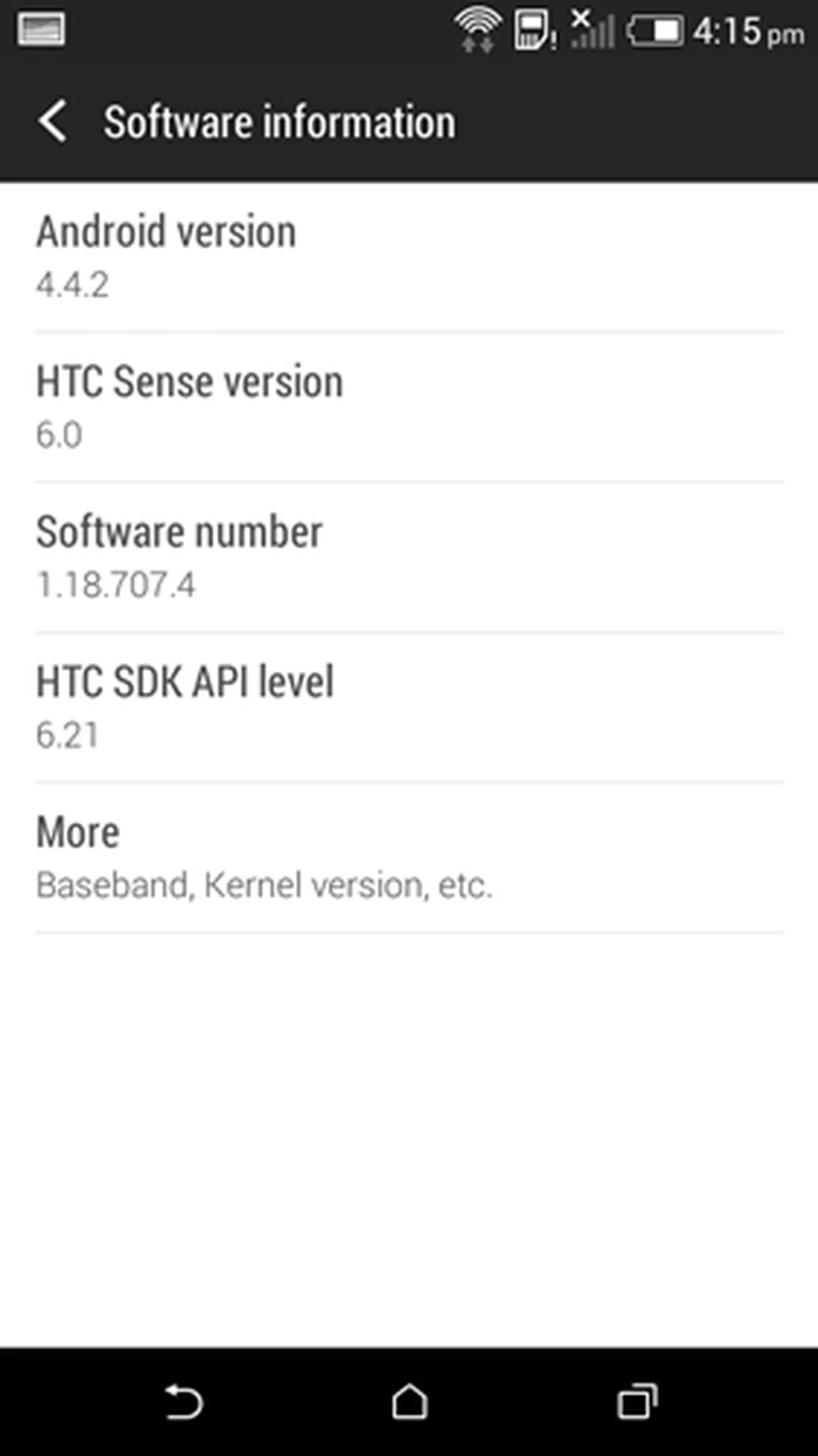 | 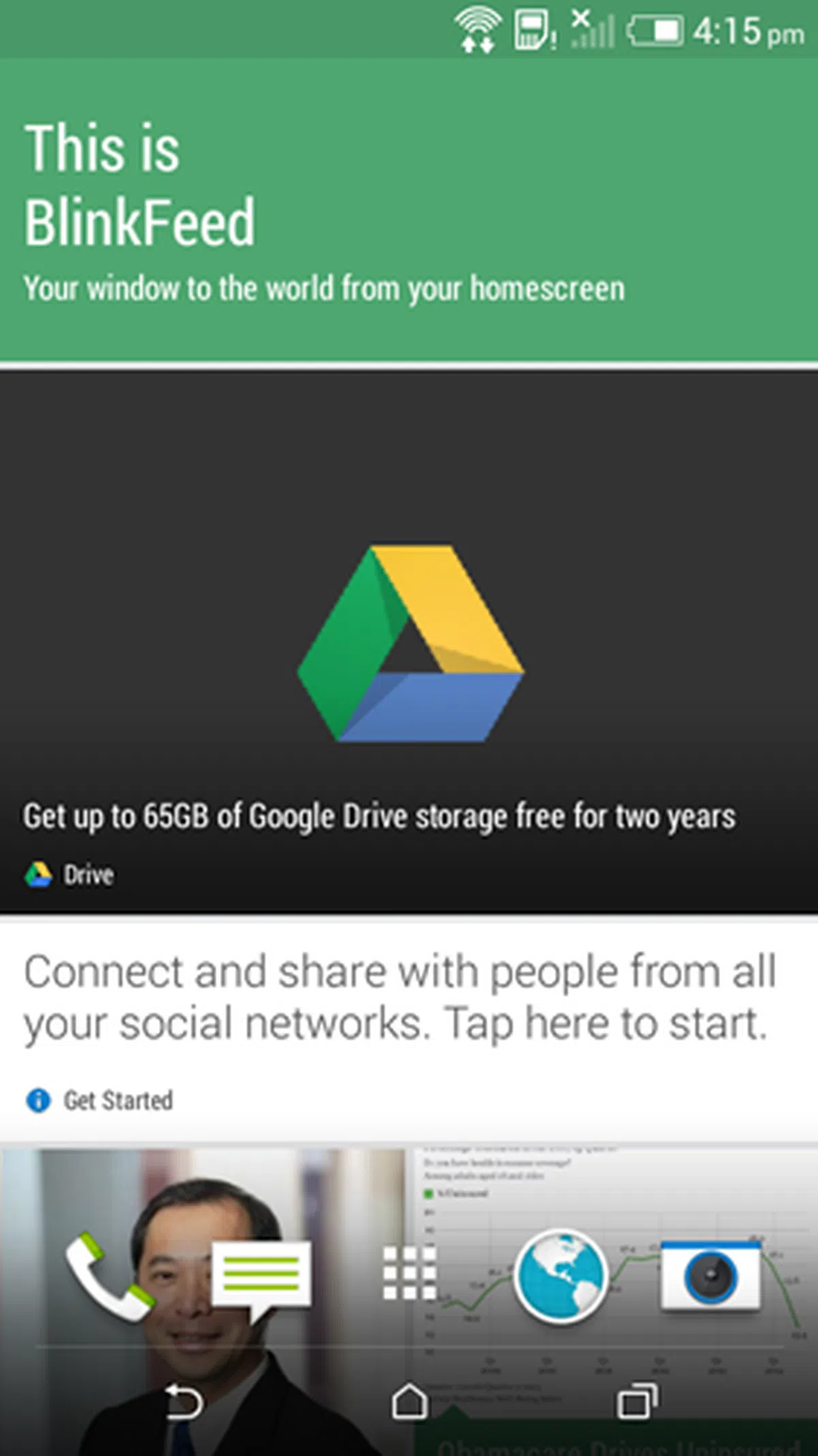 | 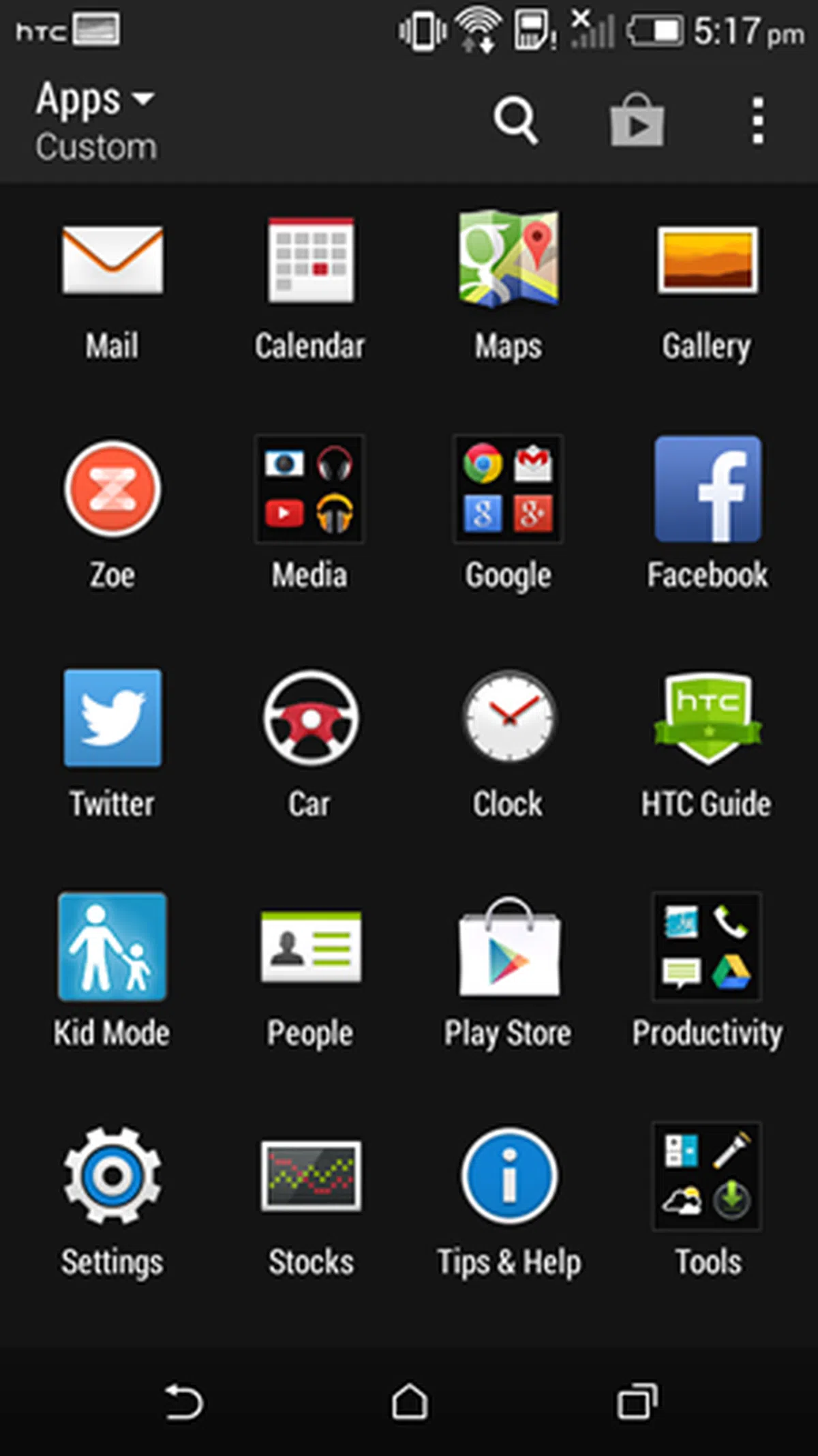 |
The Desire 610 runs on Android 4.4.2 KitKat with the latest Sense 6 overlay. Due to hardware limitations, it does not have the full feature set as its One (M8) flagship phone such as Motion Launch Gestures. You still get key features such as BlinkFeed and Extreme Power Savings Mode.
The Desire 610 is powered by a Qualcomm Snapdragon 400 quad-core 1.2GHz processor and 1GB RAM. During day-to-day usage, the user experience felt snappy with fast screen transitions. Its 8GB internal storage should suffice for mainstream consumers, but if you need additional storage space, its microSD memory card slot will come in handy. That said, the Desire 610 is one of the only two phones in this shootout to support memory cards up to 128G in capacity.

You get about 3.27GB of available storage space out of the box after updating all the preloaded apps.
Unlike the rest of the competitors in this article, the Desire 610 supports LTE CAT 4 download speeds of up to 150Mbps. While the speeds are based on theoretical estimates, this feature could be a deciding buying factor for consumers who need faster 4G cellular data connection. However, the three telcos are still rolling out CAT 4 LTE progressively. As such, one may not attain even half of the top speed most of the time. Nonetheless, having such a feature future-proofs the phone, especially when the technology will eventually be rolled out.
Huawei Ascend G6 4G

The Huawei Ascend G6 4G looks like a smaller variant of the Ascend P6/P7 with a 4.5-inch qHD display.
If you have seen the Ascend P6 or the P7, then you wouldn’t be surprised with the design of the Ascend G6 4G. What you will immediately notice is Huawei’s signature curved bottom, which breaks tradition from the typical flattened end and helps give it a unique look.
This deliberate design element has its cons though; the charging port has been shifted to the top while the 3.5mm audio output jack has been moved to the bottom left. This means that the connector will protrude out from the side and makes slipping the phone into pockets a tricky affair.

The matte back texture means that fingerprints and smudges won't be an issue on the Huawei Ascend G6 4G. It also contributes to a better handling experience of the phone.
Holding the Ascend G6 4G will make one realize that the device is really quite light. In fact, it is the lightest among the six phones at just 115g. Despite its lightweight form factor, the Ascend G6 4G still feels sturdy. The build material is plastic, but the sides have a brushed metal finish that feels good and adds a premium touch to the phone. It also helps that the back plate is matte, which means a more assuring grip.
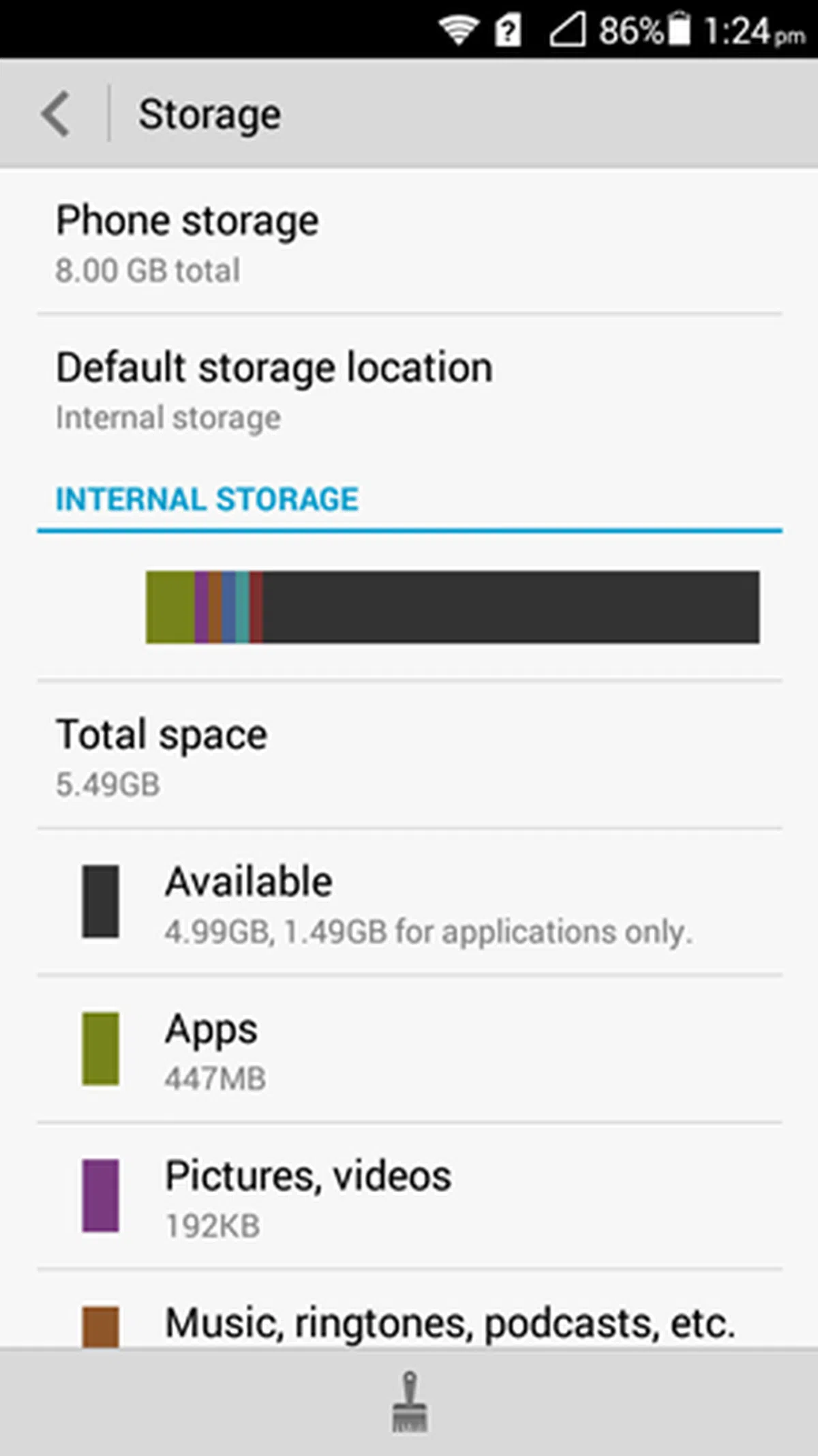 | 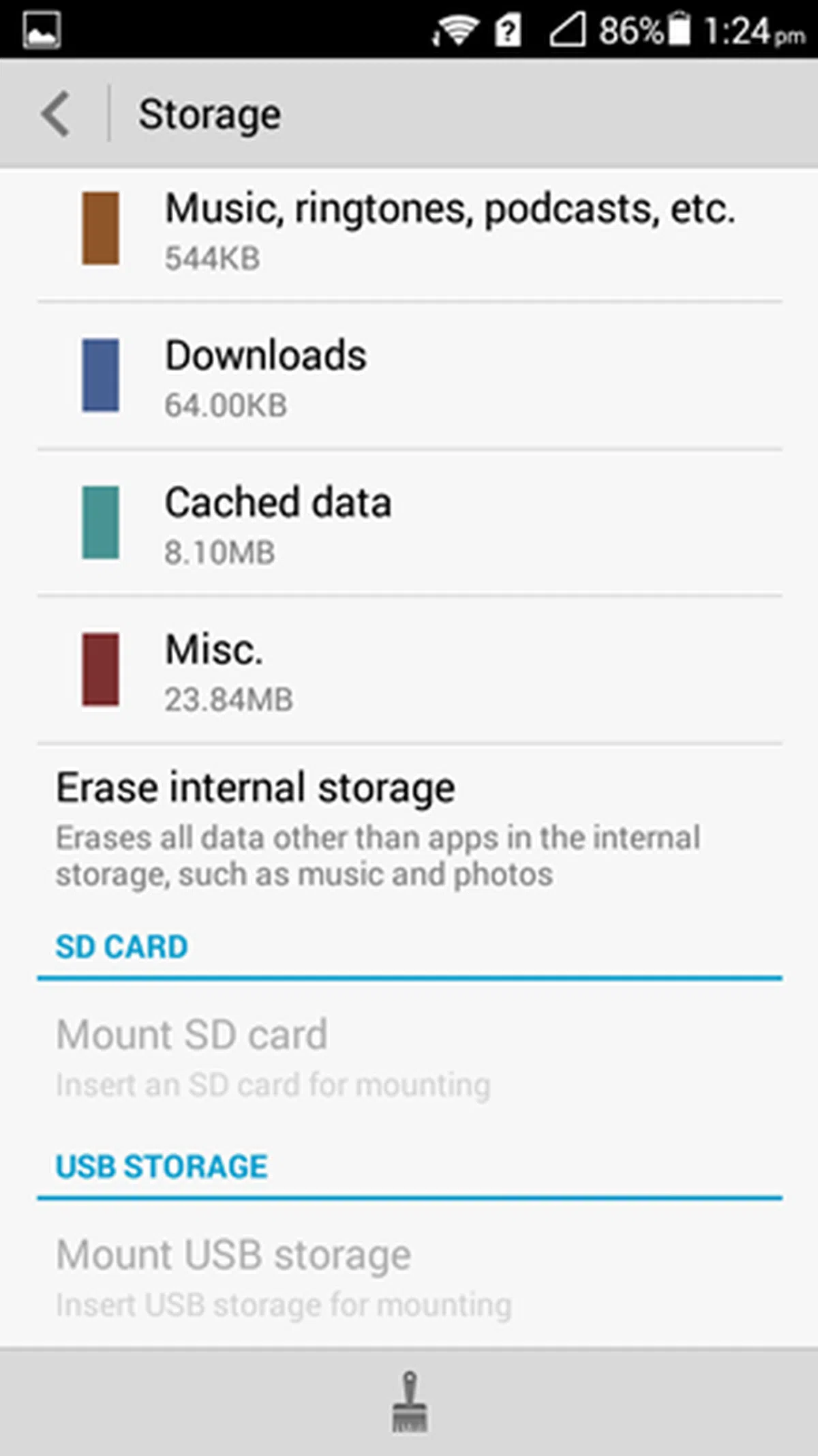 |
Contrary to its looks, the back plate is actually removable although the battery is not. Located to the right of the embedded battery are the microSD and micro-SIM card slots. The microSD memory card slot can supports cards of up to 32GB in capacity, thus bringing the total storage capacity of the Ascend G6 4G to 40GB (because like most of the compared phones, this too is embedded with 8GB of storage).

You can remove the rear cover to access the microSD and micro-SIM card slots, but the 2,000mAh battery is embedded.
The Ascend G6 4G ships with Android 4.3 Jelly Bean OS and a custom interface known as Emotion UI 2.0 Lite. Unlike the typical Android interface, Emotion UI does not have an app drawer; it adopts an iOS-like concept where apps sit on the home screen.
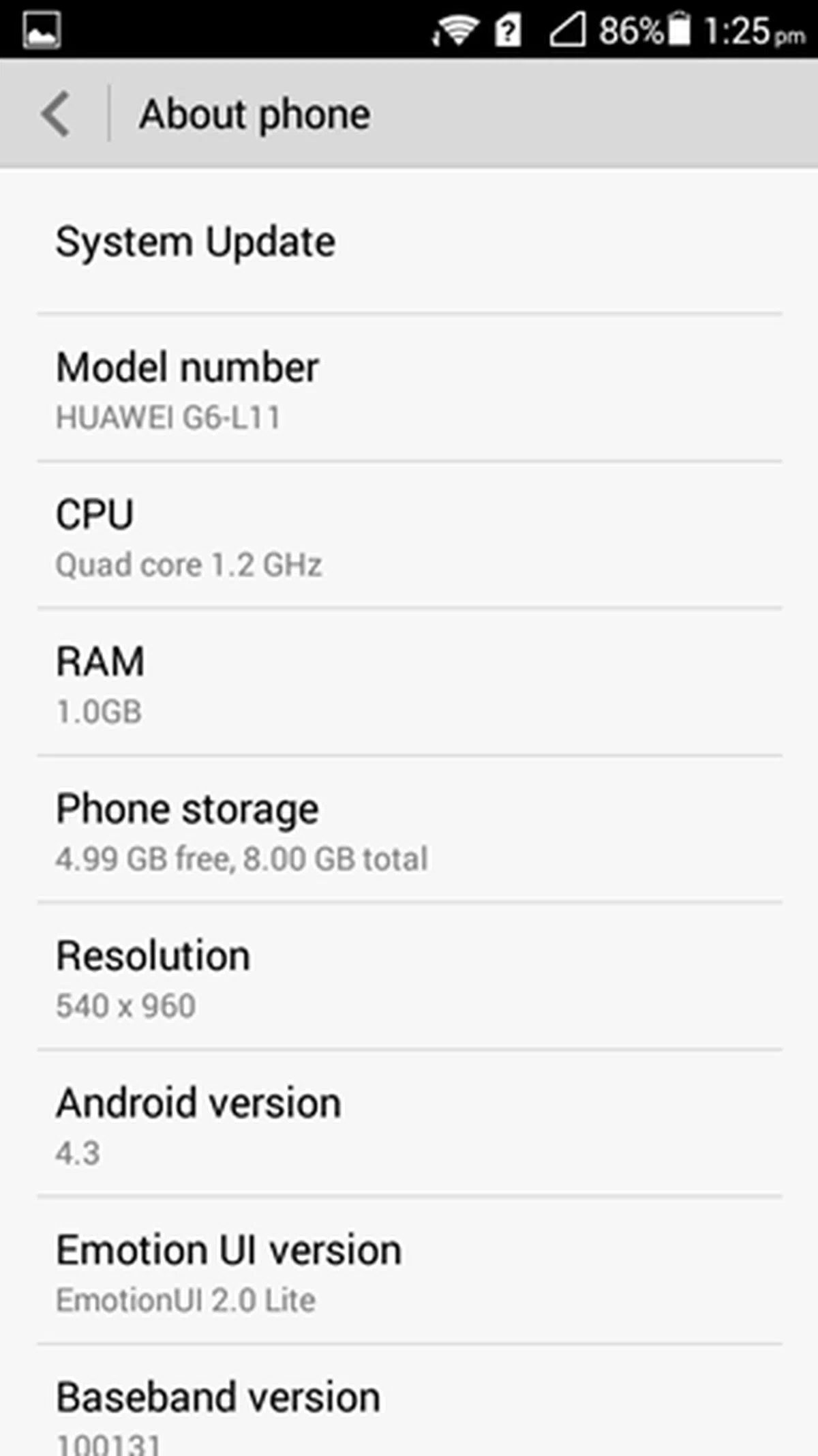 | 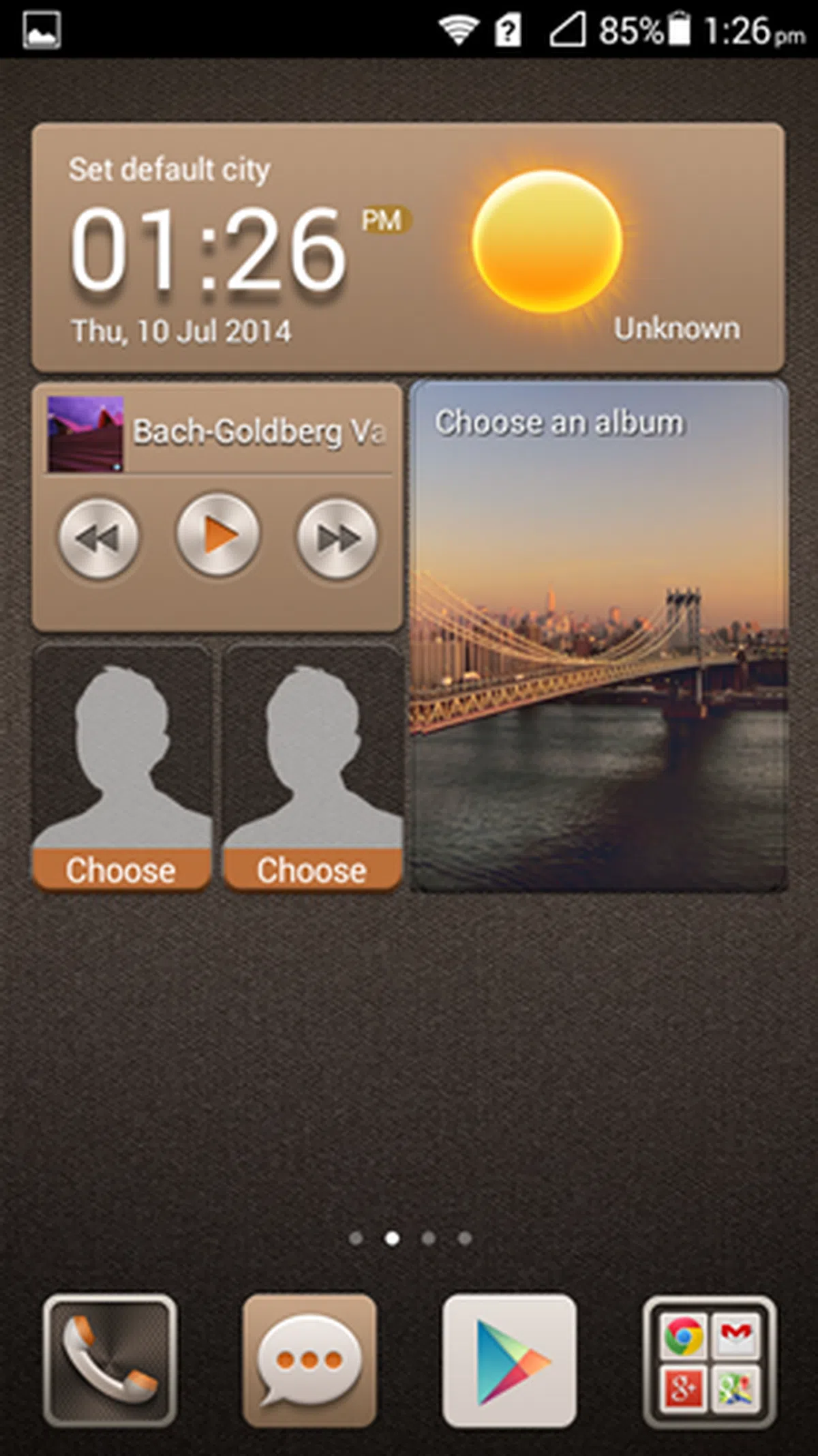 | 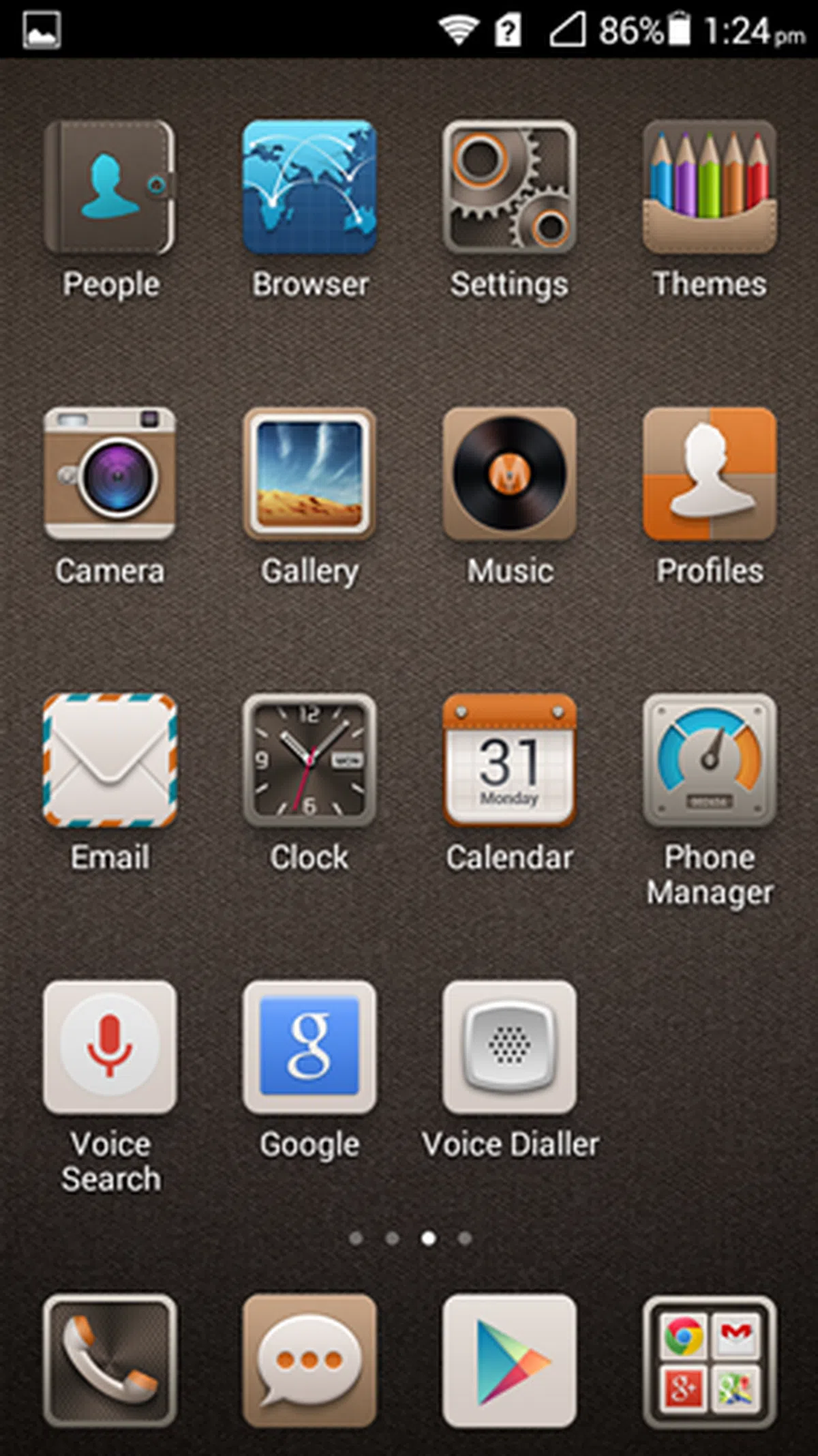 |
The Qualcomm Snapdragon 400 quad-core 1.2GHz chipset and 1GB RAM keep the show running smoothly on the Ascend G6 4G; we did not encounter any stutters or lags. Similar to the Desire 610 and G2 Mini, the Ascend G6 4G supports LTE CAT 4 where you can expect maximum download and upload speeds of 150Mbps and 50Mbps respectively.
LG G2 Mini LTE

The concept of "mini" certainly does not adhere to LG's definition; the G2 Mini LTE has a sizeable 4.7-inch display!
As the name suggests, the G2 Mini is a smaller variant of its innovatively designed G2 smartphone. Therefore, it inherits most of the design traits which are mostly positive. As the power and volume buttons are shifted to the rear of the device, there is absolutely no hardware buttons on the front and sides of the G2 Mini, which helps to keep the design clean. While it sounds great theoretically, on actual usage, the rear button design looks to be a better fit for larger devices than for more compact phones where a straightforward setup would perhaps be easier.

The rear button setup doesn't make much practical sense on a 4.7-inch phone.
The G2 Mini also sports very thin bezels, which allows LG to cram a 4.7-inch display into a compact body. This resulted in the G2 Mini having one of the highest screen-to-body ratios along with the Motorola Moto X. The 4.7-inch IPS display has a resolution of 960 x 540 pixels. With its screen size and resolution, icons, text and images do not look as sharp as they would on a higher tier device. Nevertheless, we find the screen to be quite bright and offers good viewing angles.

The back cover can be removed just like its 2,440mAh battery.
Like its bigger counterpart, the G2 Mini has a tapered back that sits comfortably in your hands. The textured surface not only gives a better grip, it also keeps fingerprints and smudges at bay. Removing the rear cover will give you access to the battery - which also can be removed/replaced - and the microSD and micro-SIM card slots. Similar to the Ascend G6 4G and Sony Xperia M2, the G2 Mini can support memory cards up to 32GB in capacity to augment its internal storage of 8GB.

After updating the preloaded apps on the LG G2 Mini LTE, you are left with about 3.31GB of available storage space out of the box.
The LG G2 Mini is preloaded with Android 4.4 KitKat and several of LG’s unique software features such as Knock Code and Guest Mode. Knock Code is a security feature that requires you to set a minimum of two to a maximum of 8 taps to unlock the phone, while Guest Mode safeguards your private content when sharing the phone with others. It was first introduced on the LG G Pro 2.
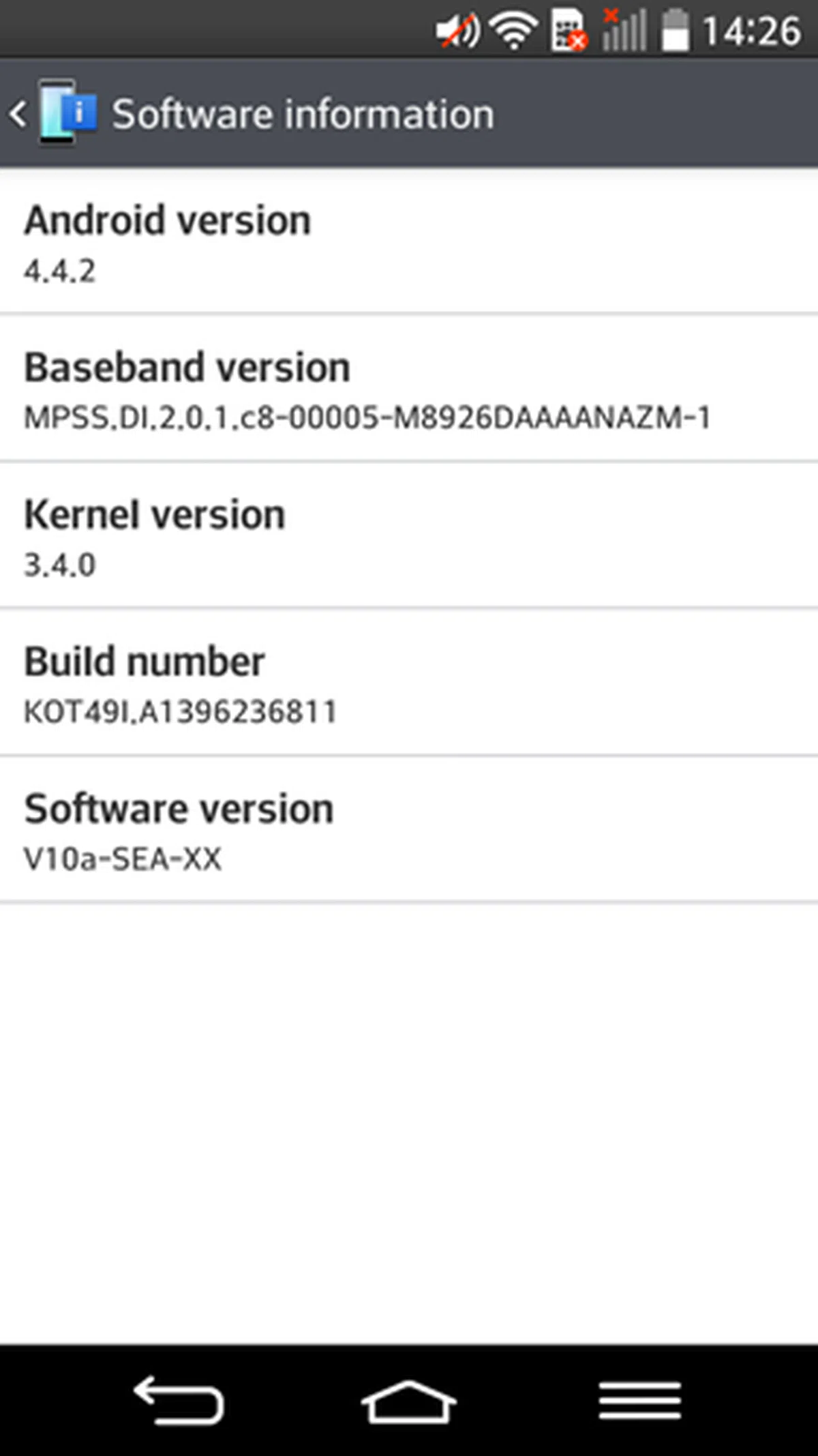 | 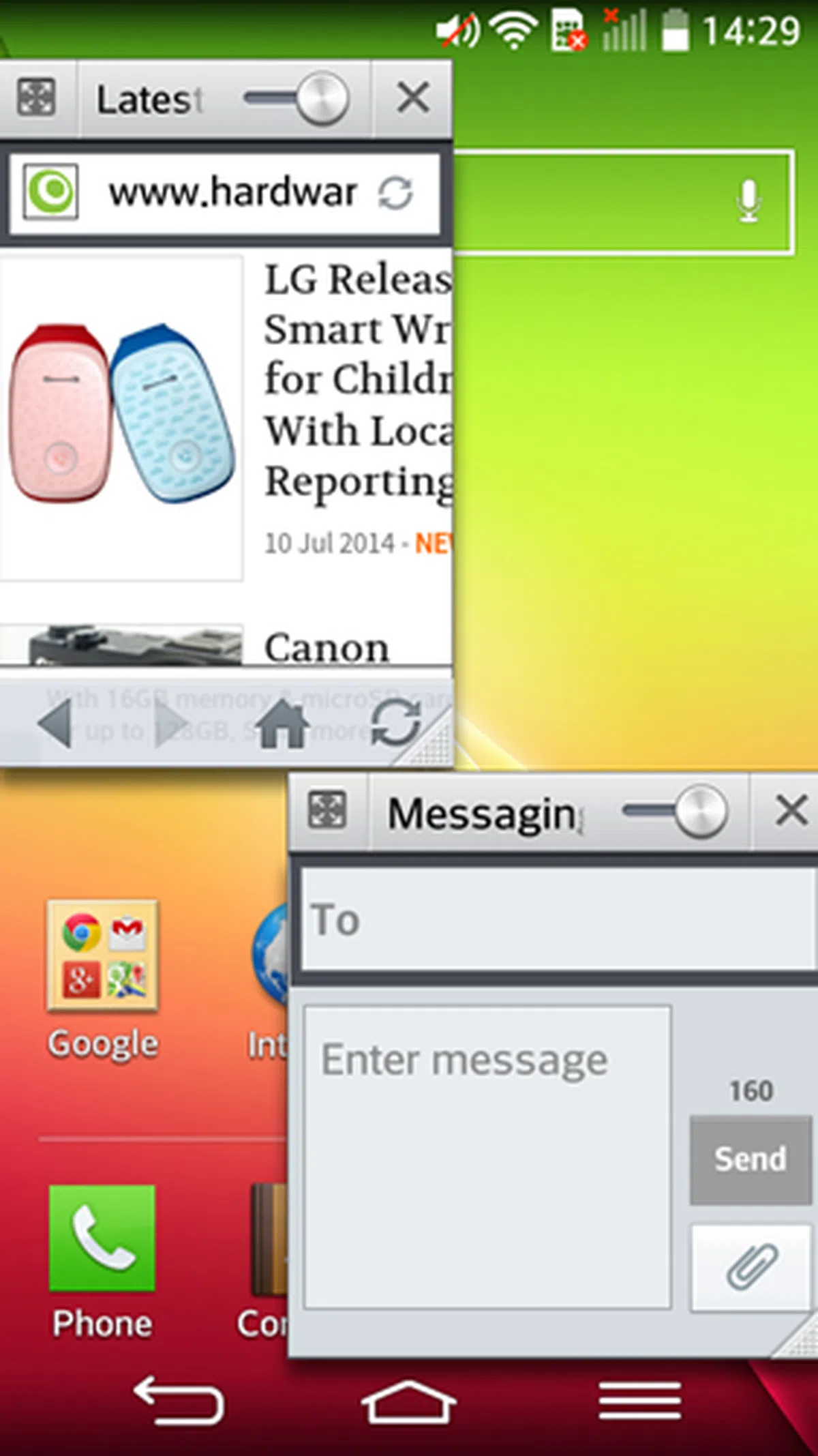 | 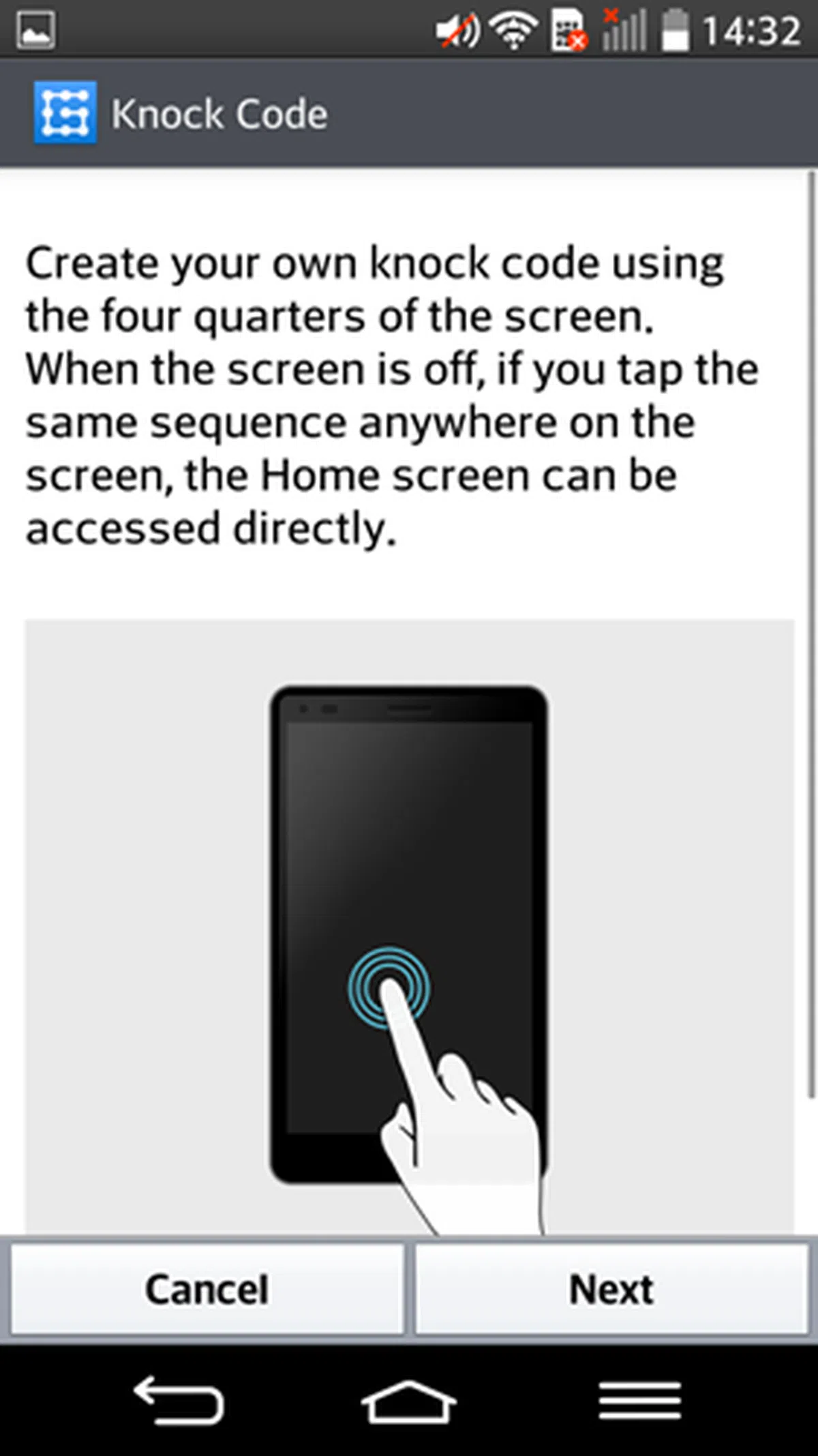 |
As with all the phones in this comparison, the LG G2 Mini is powered by a silicon chip from Qualcomm. It utilizes 1GB RAM for a fluid user experience. Like the previous two phones, it too has LTE CAT 4 connectivity.
Motorola Moto X

The Motorola Moto X has the highest resolution display in this comparison at 720p.
Easily one of the best crafted phones in the list, the Motorola Moto X has a soft curved back that would fit comfortably in your hands. The gently rounded corners also make handling the phone a great joy. To match the curvature of the rear, Motorola went the extra mile to design a custom shaped battery for the Moto X. Due to the unibody design, you won't be able to remove the rear cover or its battery.

After trials on hundreds of different pairs of hands, Motorola designed the rear of the Moto X to provide one of the most comfortable handling and we have to agree that their efforts have paid off.
The front of the Moto X is dominated by a 4.7-inch display and does not sport any physical buttons. This leaves lesser 'dead space' at the bottom to give it a refined look. The use of an AMOLED display enabled Motorola to develop a useful feature, Active Display where certain pixels are lighted up to show notifications on the lock screen. This not only alerts you to notifications, it also uses minimum battery consumption.
Given that the Moto X was the first phone under the partnership with Google (back then), it obviously runs on an almost stock Android interface save for some Motorola apps - Motorola Migrate and Assist. Initially preloaded with Android 4.2.2 Jelly Bean, the Moto X has since been upgraded to Android 4.4.2 KitKat.
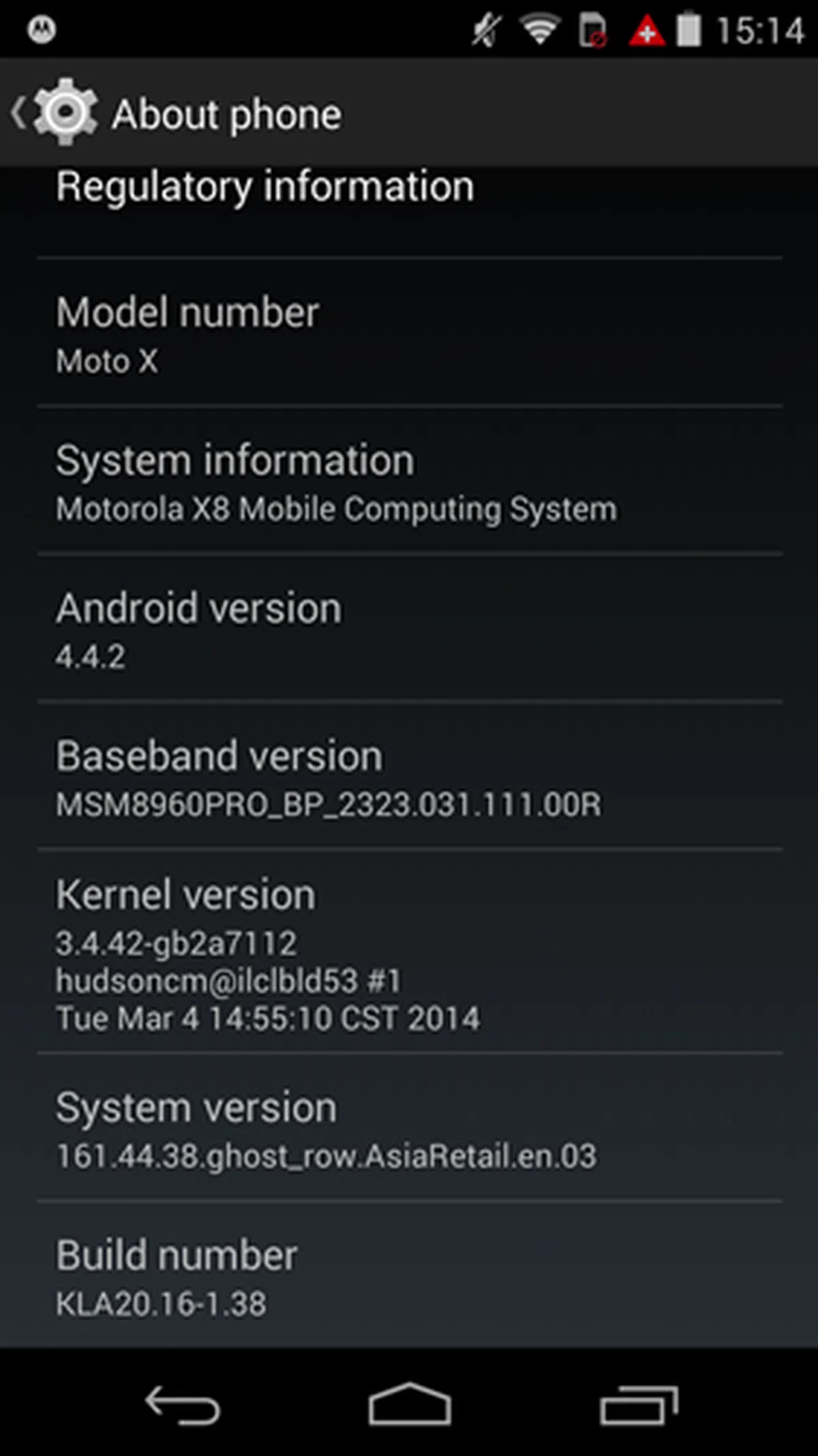 | 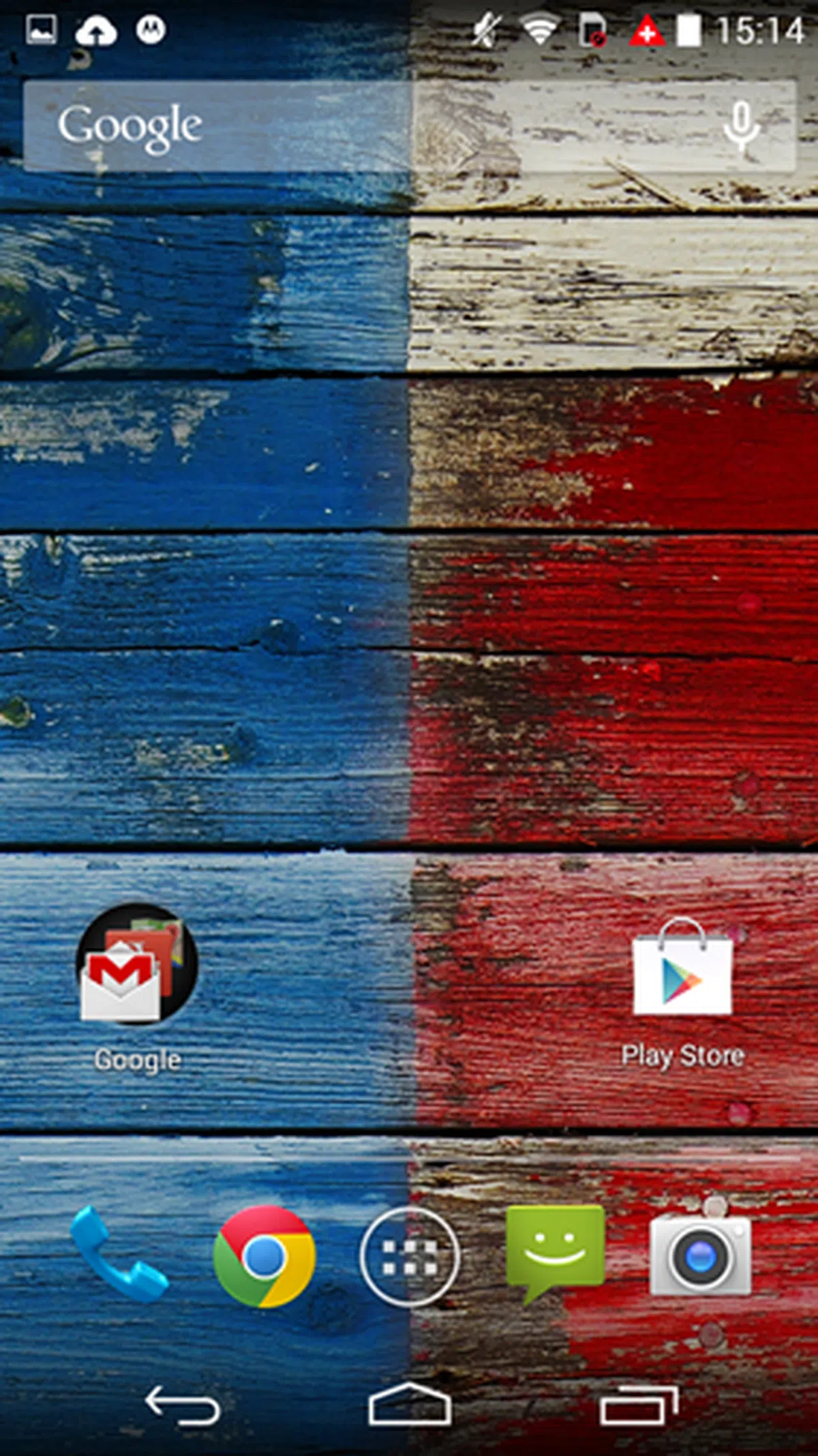 | 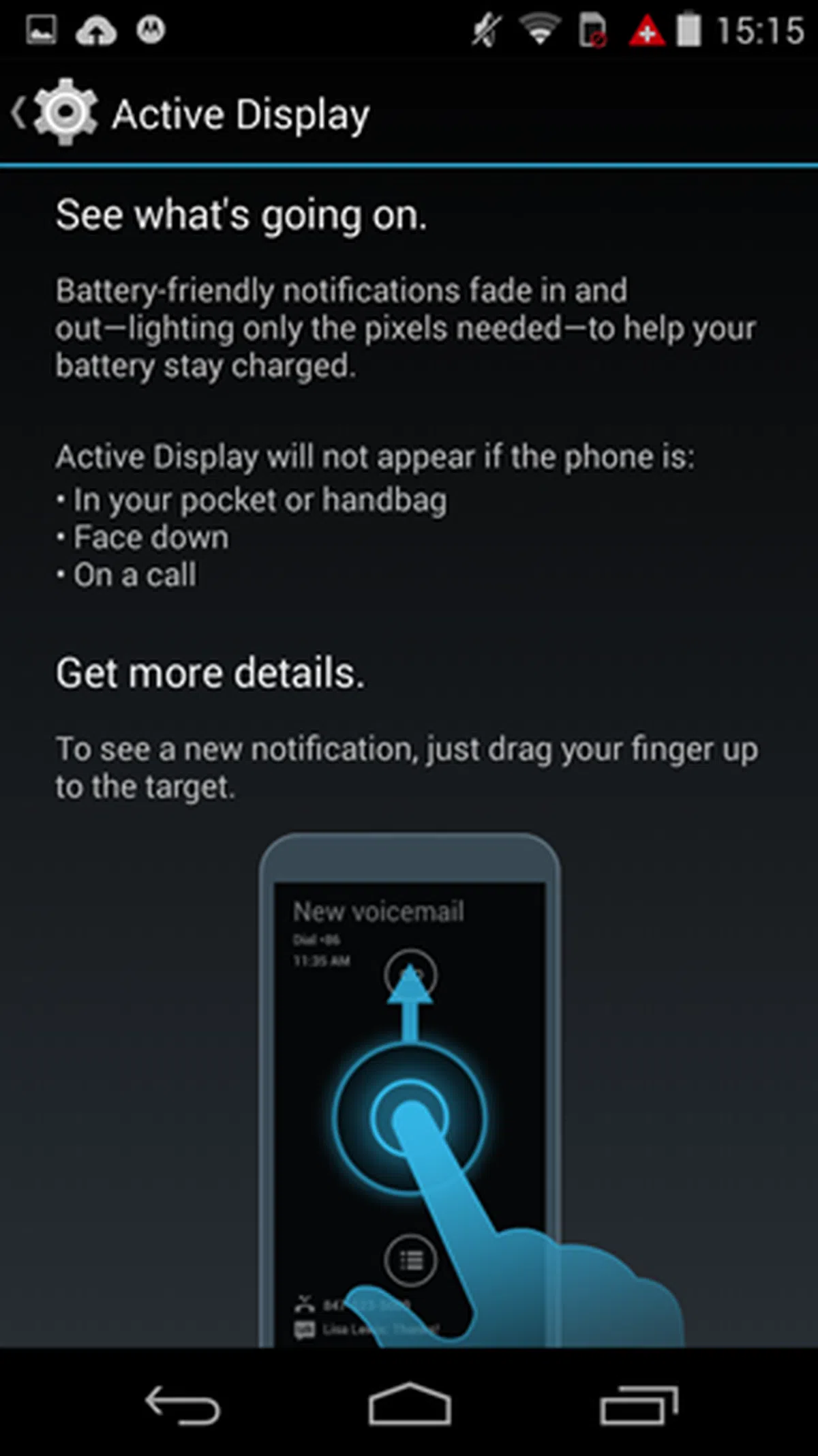 |
Powering the Moto X is Motorola’s custom CPU architecture, X8 Mobile Computing System consisting of a software optimized Qualcomm Snapdragon S4 dual-core 1.7GHz processor, a natural language processor and a contextual computing processor. Due to the almost stock Android interface and excellent optimization, the user experience felt very lively with the quick launching of apps. Having 2GB RAM also helps in ensuring a smooth operation.
It is noteworthy to mention that the Moto X is the only phone in this shootout to lack a memory card slot. As such, you have to make do with its 16GB internal storage. It also does not support LTE CAT 4 speeds, but given the state of roll-out for the high speed transfers on telco networks, we're generally happy with just 4G support.

You only have slightly more than 10GB of available storage space on the Motorola Moto X. Use that wisely as the Moto X has no memory card slot. It is noteworthy to mention that it is the only phone in this comparison to not come with one.
Nokia Lumia 635

The Nokia Lumia 635 is the most affordable 4G smartphone you can find in the market at the moment.
Nokia did not break any new ground with the design of the Lumia 635; in fact, it looks like every other Lumia device before it. It is also dressed in true Nokia’s fashion style with a range of colors including bright yellow and bright orange plus the classic white and black.

Thankfully, the bright color masks fingerprints and smudges well on the Nokia Lumia 635.
As the rear shell is removable, you can change the color according to your mood or preference. Removing the rear cover requires a little more effort than usual and one should start off from the top right corner to pry it off.

You have to remove the 1,830mAh battery - the smallest in this comparision - to access the micro-SIM and microSD memory card slots.
The microSD and microSIM card slots are not hot-swappable; this means you have to remove the battery before you can access the slots. With only 8GB internal storage, users can rely on the memory card slot - supports memory cards up to 128GB in capacity - if the onboard storage is used up.
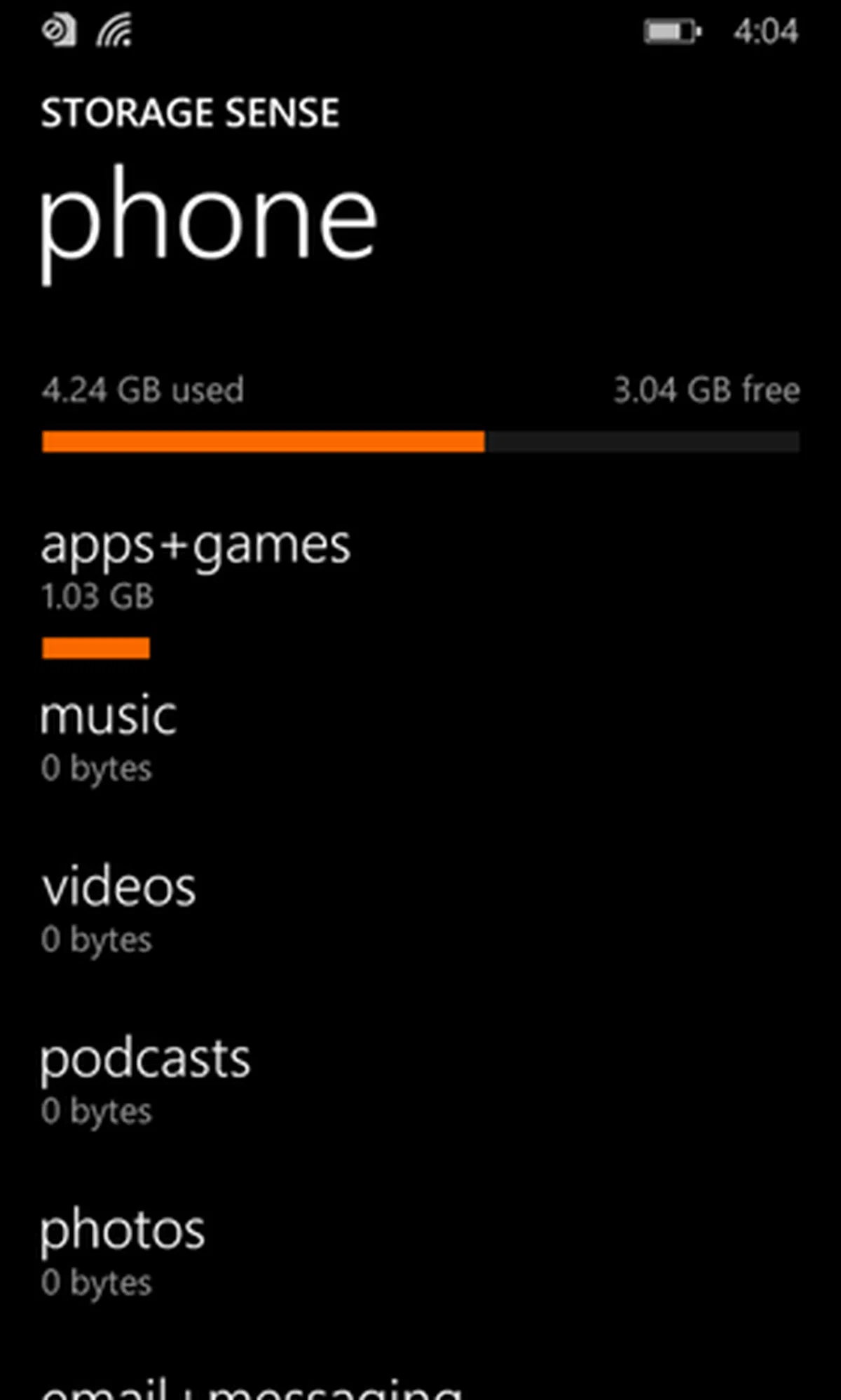 | 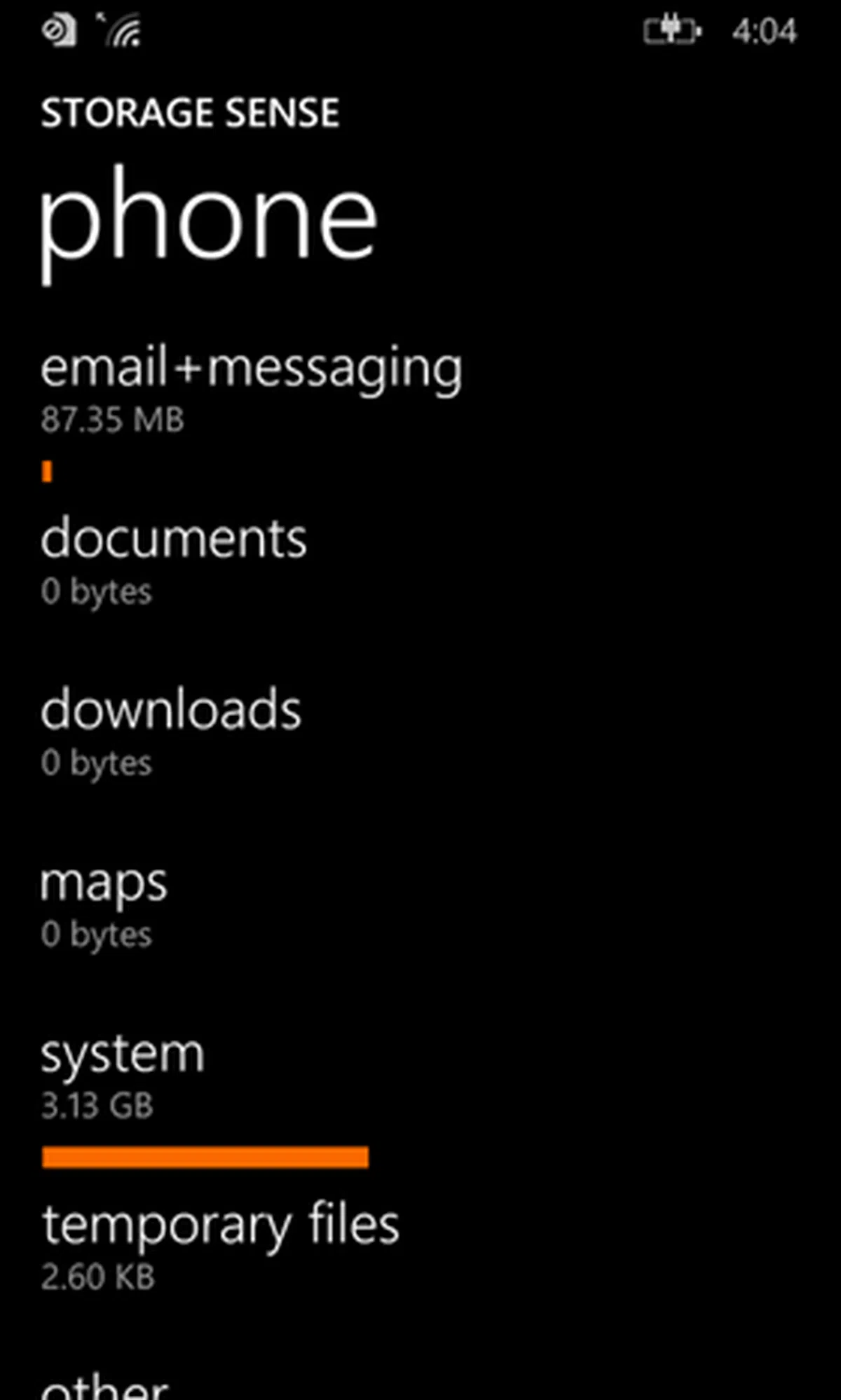 |
The glossy plastic shell makes the phone extremely susceptible to fingerprints and smudges, and does not contribute to a reassuring grip if you happen to have sweaty palms. Fortunately, it is not very heavy at 134g to use in one hand.
The Lumia 635 houses a 4.5-inch ClearBack IPS display with a resolution of 854 x 480 pixels. While the colors look nice and well presented, it has the lowest resolution screen of this comparison. Essentially, you get what you pay for. At its price point of S$239, there isn’t anything more you can expect. Of course Xiaomi's Redmi easily tops this in specs and price, but it's unfortunately not a direct comparison as it doesn't yet have 4G connectivity support.
Despite its proposition as an entry-level model, the Lumia 635 is one of the first few phones to ship with Windows Phone 8.1. You get Action Center, a swipe-down notification panel that has long existed on Google Android and introduced in Apple iOS 7 last year. Action Center can be accessed from any app including the lock screen, and allows you to customize the four quick settings.
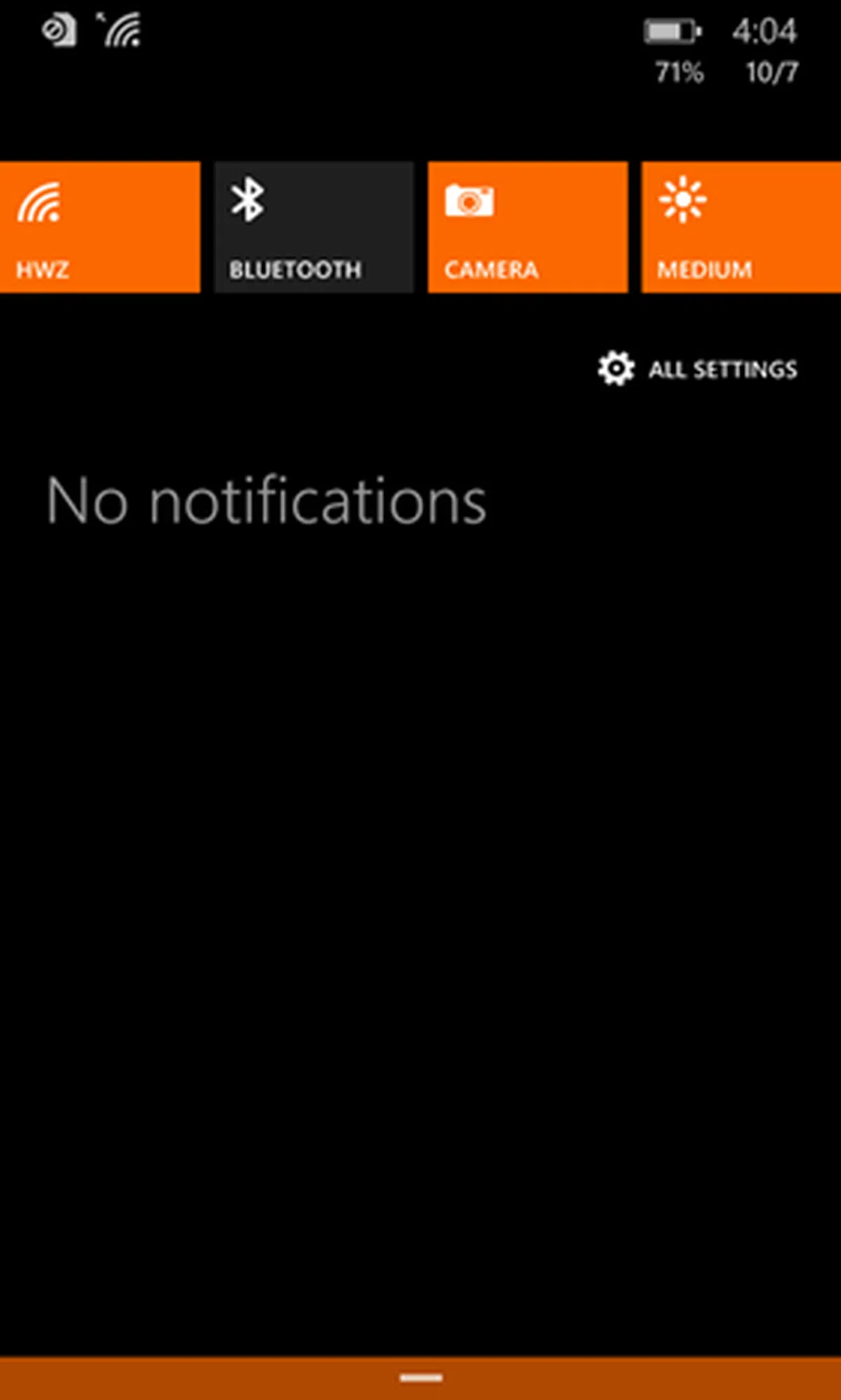 | 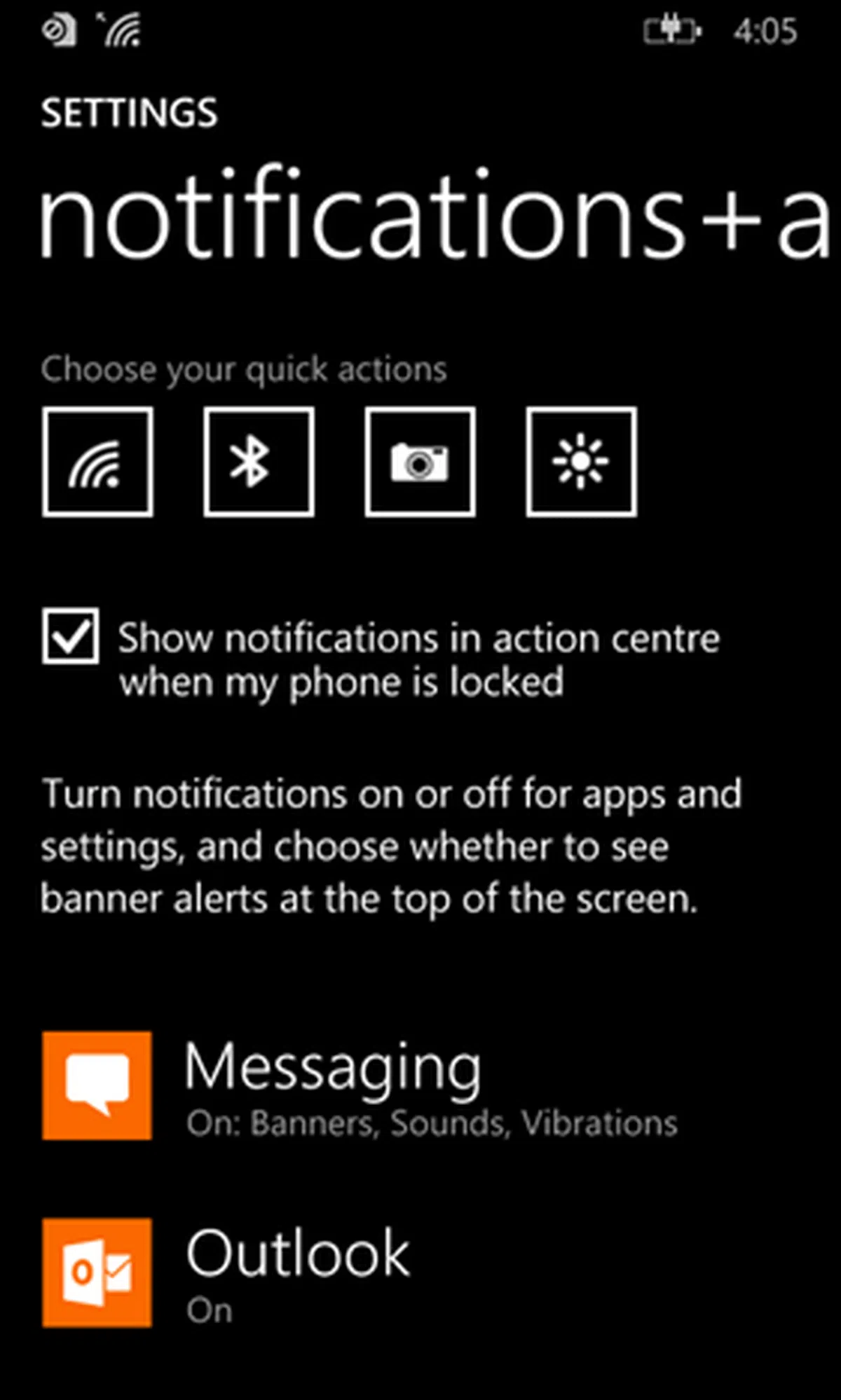 |
Even with just 512MB RAM, the Qualcomm Snapdragon 400 quad-core 1.2GHz in the Lumia 635 is able to deliver a smooth user experience. Animations and navigation are snappy that you won't realize that the phone is handling this with such minimal hardware specs. The Lumia 635 supports theoretical LTE speeds of 100Mbps (download) and 50Mbps (upload), which is a step down from the LTE CAT 4 support in some of the competing phones, but this is really more of an informational note than a sore point.
Sony Xperia M2

The Sony Xperia M2 has the biggest display at 4.8-inches, but its qHD resolution is nothing to shout about.
Sony is adhering to the ideology of “why fix something if it isn’t broken” when it comes to the design of the Xperia M2. The OmniBalance design, now in its second year of implementation, continues to serve Sony well as the M2 clearly stands out from the rest of the phones from an overall appearance perspective.
Unfortunately, its mid-range positioning means that Sony has to do away with the expensive rear glass panel, as well as water and dust resistance features to keep its price in check. The back is actually made from glossy polycarbonate, which is covered in smudges within seconds of handling it.

The rear plastic material on the Sony Xperia M2 is easily scratched.
Its micro-USB port for charging and data transfer is left exposed on the top left side of the device while the opposite side houses the microSD and micro-SIM card slots under a long plastic flap. As it comes with 8GB internal storage, we reckon the memory card slot will be put to good use for multimedia junkies.

The Sony Xperia M2 has about 4.19GB of available storage space out of the box for you to install apps, store music and video files.
Due to its 4.8-inch display, the M2 is rather tall and wide. The sides and corners are rubberized though, which helps to offer a better grip of the phone. Like the Ascend G6 4G and G2 Mini, its display resolution is hardly spectacular at 960 x 540 pixels. It’s sufficient for most tasks, but suffers from poor viewing angles.
Running under the hood is the Qualcomm Snapdragon 400 quad-core 1.2GHz processor and 1GB RAM. Sony has a similar approach as Motorola when it comes to the interface; there are minimal tweaks on the software aspect of the M2. What irked us a little is the fact that it ships with Android 4.3 Jelly Bean when the almost one-year-old Moto X has already been updated to Android 4.4.2 KitKat. In line with HTC, Huawei and LG, the M2 is capable of supporting LTE CAT 4 speeds.
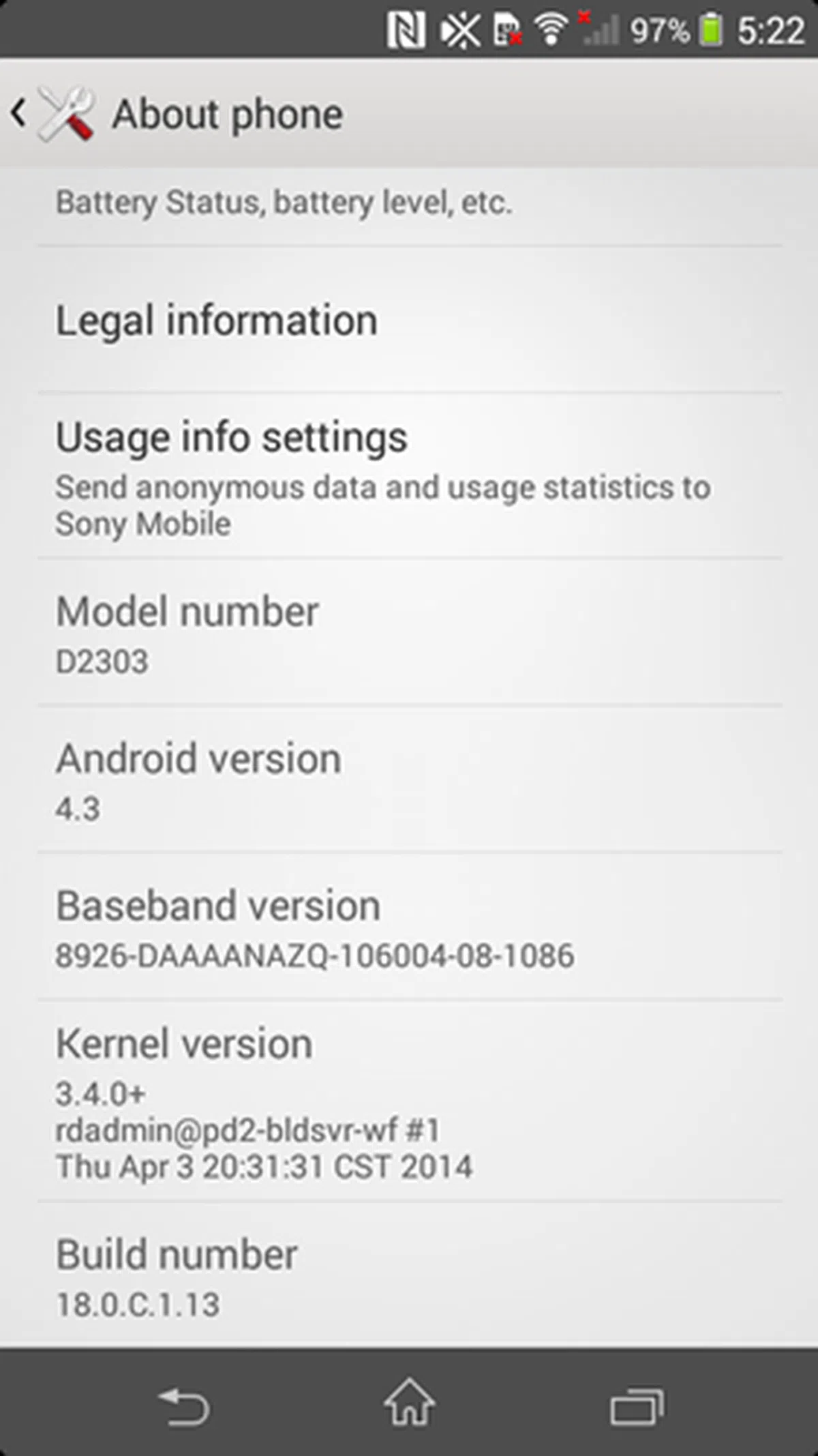 | 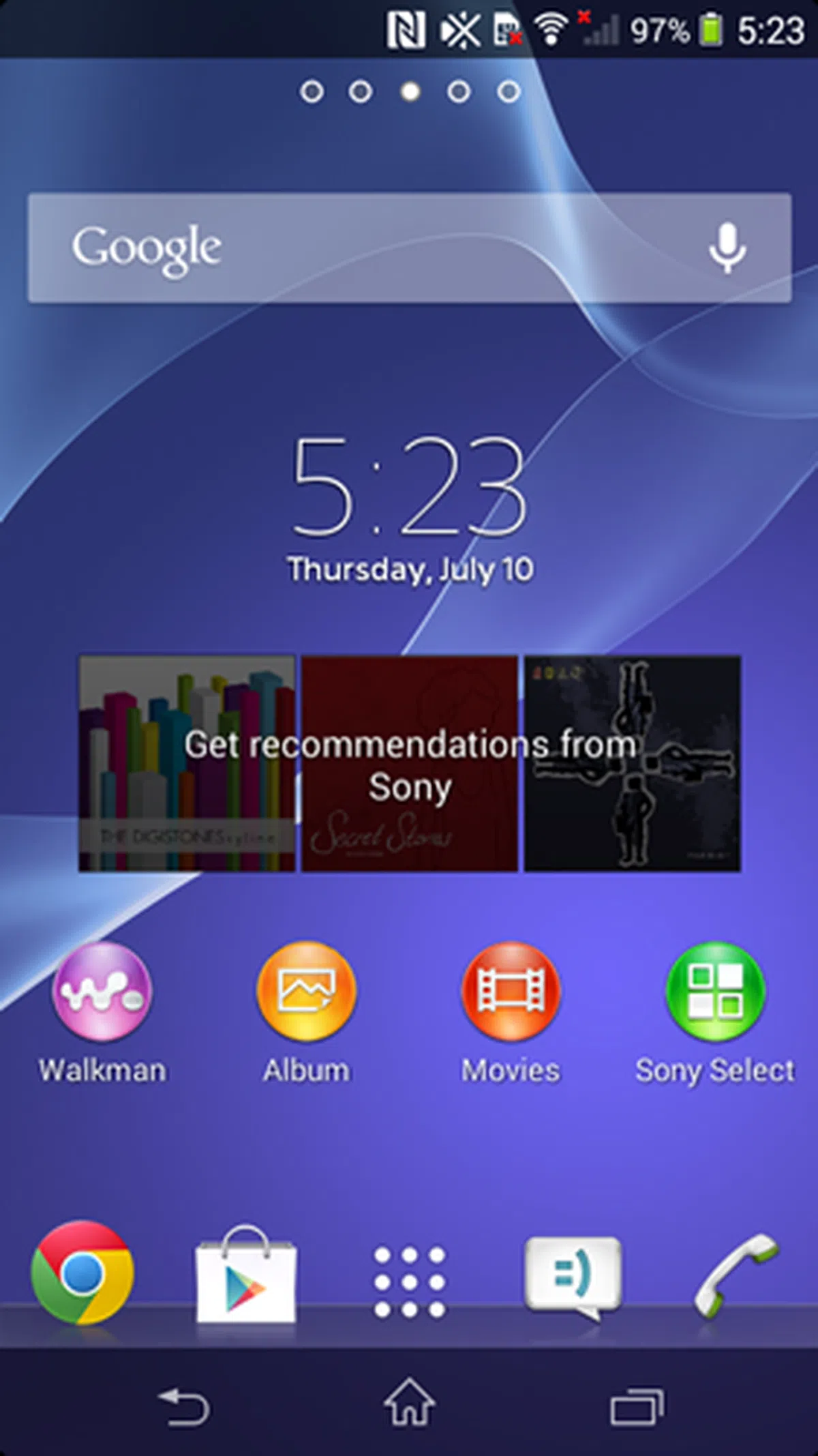 | 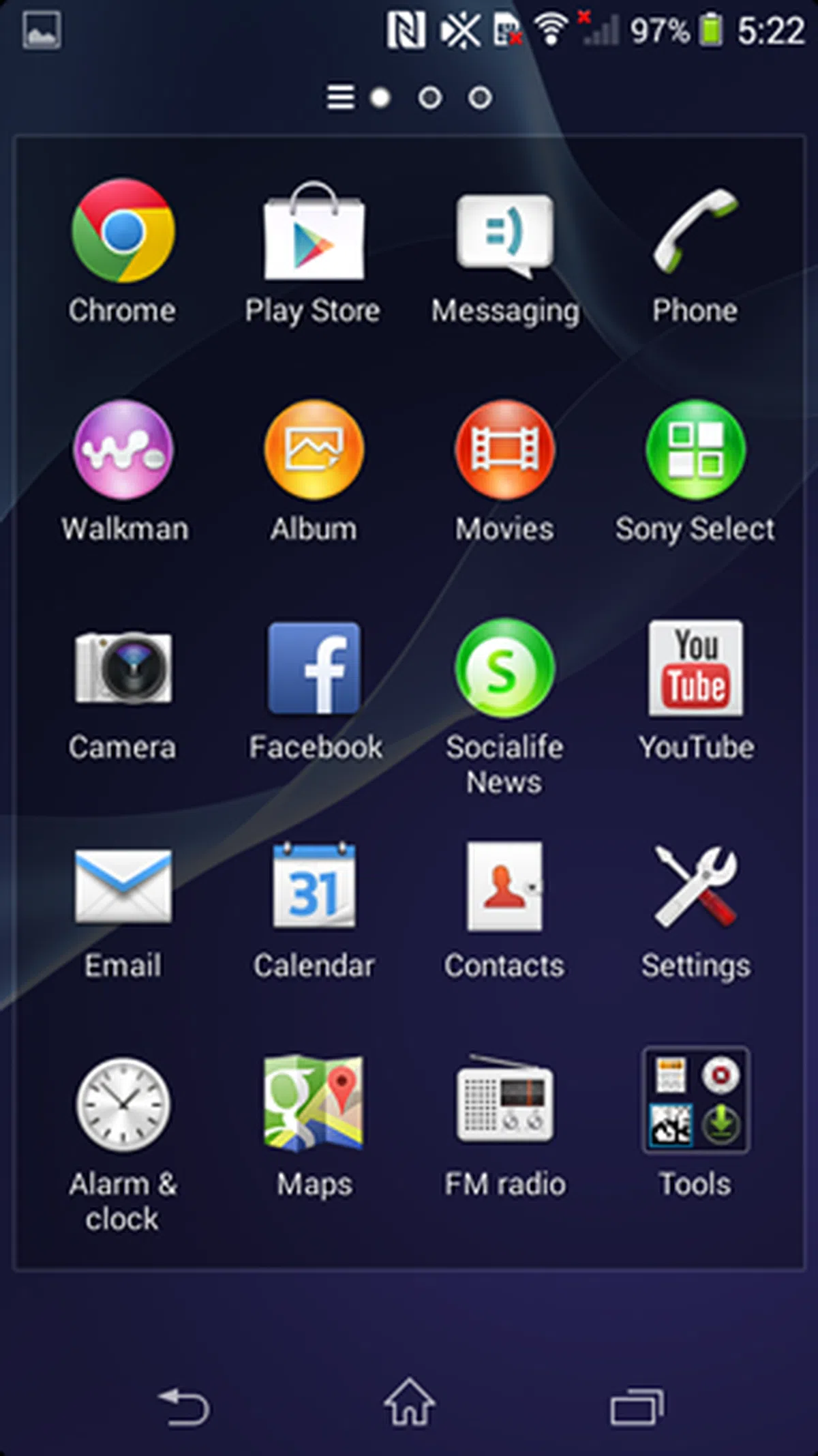 |

The front-facing shot of the six phones. <br> Left to right: HTC Desire 610, Huawei Ascend G6 4G, LG G2 Mini LTE, Motorola Moto X, Nokia Lumia 635 and the Sony Xperia M2.

The rear shot of the six phones. <br> Left to right: HTC Desire 610, Huawei Ascend G6 4G, LG G2 Mini LTE, Motorola Moto X, Nokia Lumia 635 and the Sony Xperia M2.

The left side profiles of the six phones. <br> Bottom to top: HTC Desire 610, Huawei Ascend G6 4G, LG G2 Mini LTE, Motorola Moto X, Nokia Lumia 635 and the Sony Xperia M2.

The right side profiles of the six phones. <br> Bottom to top: HTC Desire 610, Huawei Ascend G6 4G, LG G2 Mini LTE, Motorola Moto X, Nokia Lumia 635 and the Sony Xperia M2.

The top view of the six phones. <br> Bottom to top: HTC Desire 610, Huawei Ascend G6 4G, LG G2 Mini LTE, Motorola Moto X, Nokia Lumia 635 and the Sony Xperia M2.

The bottom view of the six phones. <br> Bottom to top: HTC Desire 610, Huawei Ascend G6 4G, LG G2 Mini LTE, Motorola Moto X, Nokia Lumia 635 and the Sony Xperia M2.
Benchmarks Performance
While we usually start off our performance comparisons with the Android OS based Quadrant benchmark to assess the phone's processing capabilities, we doubt that's the most important aspect one's looking out for in mid-tier phones. Besides, the numbers don't really dictate how the phones handle in real usage where these and many other devices fare decently. And since we've a Windows Phone 8.1 device among the comparison, we've chosen to compare mobile browsing response time with the SunSpider JavaScript benchmark which is browser-oriented and not OS specific. Following that, we proceeded with our usual battery life testing. For ease of reference, we've repeated the specs comparison table once more:-
SunSpider JavaScript Benchmark
SunSpider Javascript serves as a common benchmark that measures the browsing performance of mobile devices, and is applicable for all mobile platforms. It not only takes into consideration the underlying hardware performance of a device, it also assesses how optimized a particular mobile platform is able to deliver a high-speed web browsing experience on its default browser. It is important to note that for this benchmark, a lower figure indicates a better web browser performance on a mobile device as it measures the time taken in milliseconds to complete the scripted benchmark.

The Desire 610 held a significant margin ahead of the pack with a score of 860ms in the SunSpider Javascript benchmark. Compared to its closest rival (the Motorola Moto X), the Desire 610 fared about 19% better. Regardless of this theoretical performance testing, as we've noted in the individual product pages that all of the devices are generally quite usable for everyday tasks with no unwanted slowdowns or pauses that would distract the prospective users.
Battery Performance and Portability
Our standard battery test for mobile phones includes the following parameters:
- Looping a 800 x 480-pixel video with screen brightness and volume at 100%
- Wi-Fi and Bluetooth connectivity turned on
- Constant data streaming through email and Twitter


Even though the Moto X has a higher resolution display, it lasted the longest at 8 hours and 50 minutes. The Desire 610 came close behind at 8 hours and 33 minutes. Looking at the Power Consumption chart, the Desire 610 has the lowest power draw at 0.91 watts, which is even lower than the power-efficient AMOLED display of the Moto X. This is logical since the Moto X has more pixels to power its screen. Meanwhile, LG and Huawei were the least power efficient given their battery uptime and battery specs.

We measure the portability of a device by calculating its battery life to (weight x volume) ratio. The Moto X clinched the top spot due to a combination of good battery life and compact form factor. Huawei and LG fared well as well because of their ultra light weight. The most surprising of the lot is the HTC Desire 610 as it had excellent battery life, top notch power efficiency and yet it's among the worse in the overall portability aspect because it is the second heaviest and thickest device in this comparison.
Imaging Performance
The Desire 610 is equipped with an 8-megapixel camera with an aperture of f/2.4 and a backside illuminated (BSI) sensor. It has a front-facing 1.3-megapixel camera.

HTC Desire 610 - Image quality is average; image artifacts are seen in the darker areas of the photo and the edges are fuzzy, Overall color cast is a tad on the warmer side too.
The Huawei Ascend G6 4G has an 8-megapixel rear camera with an aperture of f/2.0 and a backside illuminated sensor. It also has a 5-megapixel front-facing camera, which is the best (on paper) among the phones compared.

Huawei Ascend G6 4G - The image quality is one of the better ones we've seen with little image artifacts, good color contrast and sufficient details captured.
The LG G2 Mini LTE has an 8-megapixel rear camera with multi-point autofocus and an LED flash.

LG G2 Mini LTE - Image artifacts can be seen in the darker areas although they are not as obvious as the Desire 610. Otherwise, it's generally got a decent imaging quality apart from the slightly cooler cast.
The CPU on the Moto X is not the only component to get its own branding; its 10-megapixel rear camera has an imaging technology called ClearPixel which uses a different color filter to capture more light.

Motorola Moto X - Image quality is good with low noise levels and good color reproduction. However, it seems to lack slight sharpness along the edges.
The Nokia Lumia 635 sports a 5-megapixel rear camera with an aperture of f/2.4.

Nokia Lumia 635 - The image seems to be a little cool, lacks details and colors are not as punchy.
The Sony Xperia M2 is equipped with an 8-megapixel Exmor RS sensor which has a host of imaging tools such as AR effect, Timeshift Burst and Superior Auto.

Sony Xperia M2 - The image has low level of details with visible artifacts. It's noise control is overly aggressive, smudging far more details than the HTC Desire 610. Overall, it's a bit disappointing considering its a Sony phone and their technology being deployed.
Conclusion
After many months of reporting and reviewing the top-tier smartphones and those that serve as a cross between tablets and smartphones - phablets, we paused to consider the many mid-range phone options in a bid to highlight more manageable and handy smartphone options. For one, we find the immensely larger devices getting more tricky to handle as a phone and we know deep in our hearts that there is a large audience group who aren't looking for the most flashy, over-the-top devices and certainly don't mind more practical options. Besides, the lower price points are sure to be attractive too.
With that in mind, we scoured for the latest that each major brand has to offer in their mid-range portfolio that offer smaller than 5-inch screens, feature fairly updated operating systems and modern features like 4G LTE support. To our surprise, most of them were priced about S$500 or below and featured many of the features found on the top-tier devices (suffice to say, that's how we derived at our article title too). Even more surprising, we managed to squeeze in Motorola Moto X featuring a 4.7-inch, 720p HD screen - the best of the lot. After handling these phones for sometime and putting it through their paces, here's the final outcome:-
HTC Desire 610 | Huawei Ascend G6 4G | LG G2 Mini LTE | Motorola Moto X | Nokia Lumia 635 | Sony Xperia M2 | |
Design | 7.5 | 8.0 | 9.0 | 9.0 | 7.5 | 7.5 |
Features | 8.5 | 8.0 | 8.0 | 9.0 | 7.0 | 7.0 |
User-Friendliness | 8.5 | 8.0 | 8.5 | 8.5 | 8.5 | 8.5 |
Performance | 8.5 | 8.0 | 8.0 | 9.0 | 7.5 | 7.0 |
Value | 8.0 | 7.5 | 6.5 | 8.0 | 7.5 | 5.0 |
Price | S$399 | S$528 | S$568 | S$239 | S$398 | |
Overall | 8.0 | 8.0 | 8.0 | 8.5 | 7.5 | 6.5 |
Take note that we had to factor in street price in addition to suggested retail prices since some of the phones have been in the market since late last year, while some others have only recently launched. The time of availability of each device is beyond our control since every vendor has its own roll-out plans. As such, our article is only accurate at the point of publication. Having said that, here's a summary of each smartphone for this comparison and their final standings:-
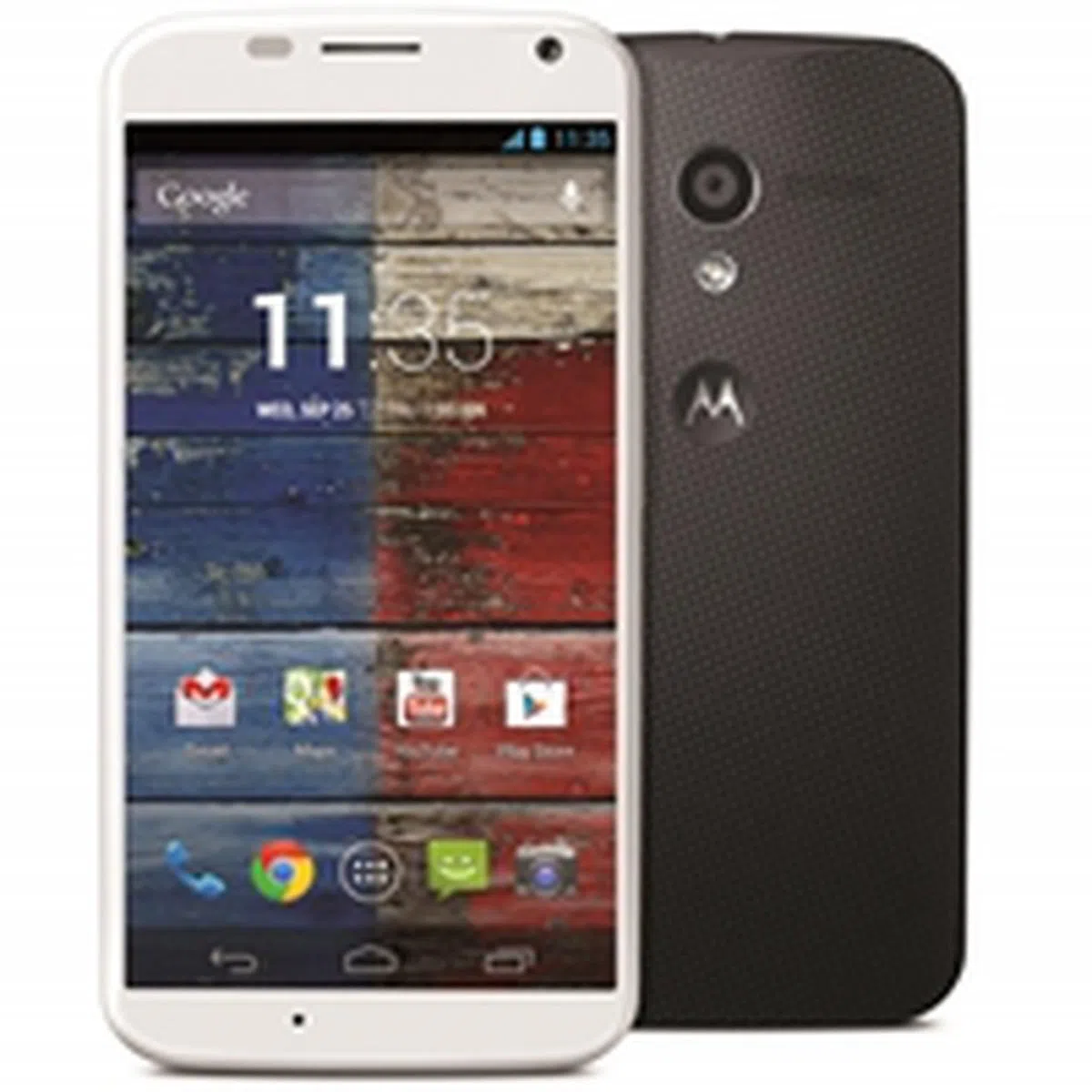 | The Motorola Moto Xsurprised us the most in this shootout. Despite being released more than a year ago, the Moto X managed to surpass the competition in many areas such as design, handling and performance. The phone was just made available recently to the local market and as such, it's a 'new' contender against the competitors in this shootout. Even though it has a 4.7-inch display, the Moto X feels extremely comfortable and we had no problems using it in one hand. It might be made of plastic, but the Moto X has smooth and solid build quality that will appeal to its prospective buyers. On the software side, it's impressive that Motorola continues to deliver the latest updates for the Moto X after a year. Its use of a stock Android interface also makes the user experience extremely smooth and snappy. Its X8 Computing System with software optimizations also gives the Moto X an edge over the competition; it ranked consistently in the top two positions in all our benchmarks. Imaging quality is also the best of the bunch. There is without a doubt that we are looking at the best performing phone in this shootout. Its HD resolution AMOLED screen further adds to its credentials and offers the best visual experience. Its two main drawbacks is the S$568 price tag and the non expandable 16GB memory built-in. | |
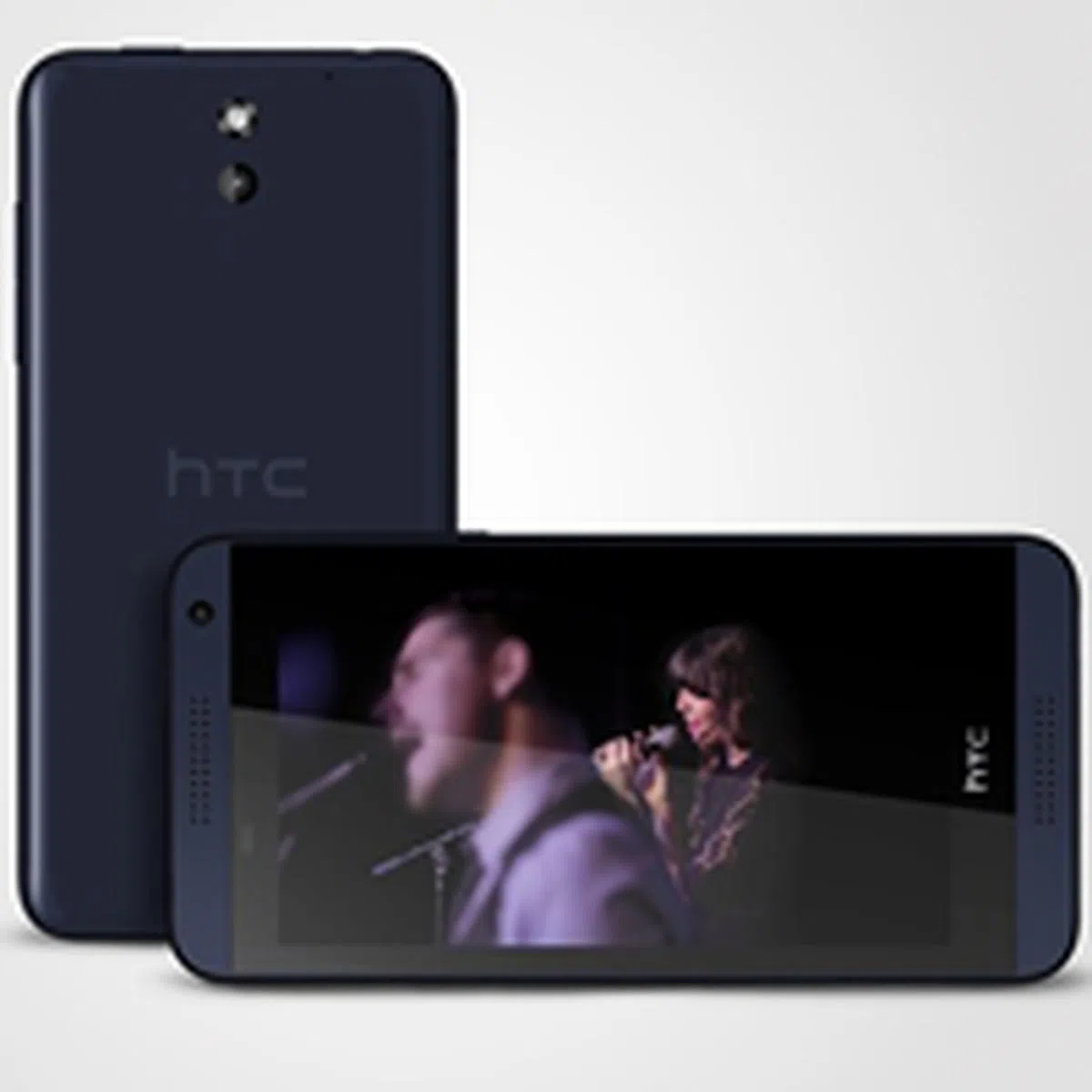 | HTC has been churning out all-rounder smartphones and the Desire 610comes close in that aspect. With a new direction this year, HTC has standardized the appearance, hardware and software across its portfolio of devices. This ensures a uniform user experience on any HTC device. The Desire 610 fared very well in the SunSpider Javascript test, battery mileage and power consumption aspects even though it is equipped with the same processor used across the competitors (except the Moto X) and has a smaller battery capacity. Its Sense 6 interface, while lacking some features found in its flagship One (M8), has enough goodies to please us. It's also got the best speakers of the lot if you tend to listen to a lot of audio at your desk. Its choice of a glossy rear doesn't go well with us and we secretly hope that the Desire 610 dons a higher resolution display. Imaging quality from its camera is slightly below average for its class and it might put you off if it's a crucial aspect. While the suggested retail price is rated for S$398, you could get for up to $50 less at certain retailers. Despite a few setbacks, the phone offers a lot of features like BoomSound, 128GB microSD support, Cat 4 LTE connectivity and NFC to name few. As such, the Desire 610 just manages to clinch our Best Value Award for its decent overall package. | |
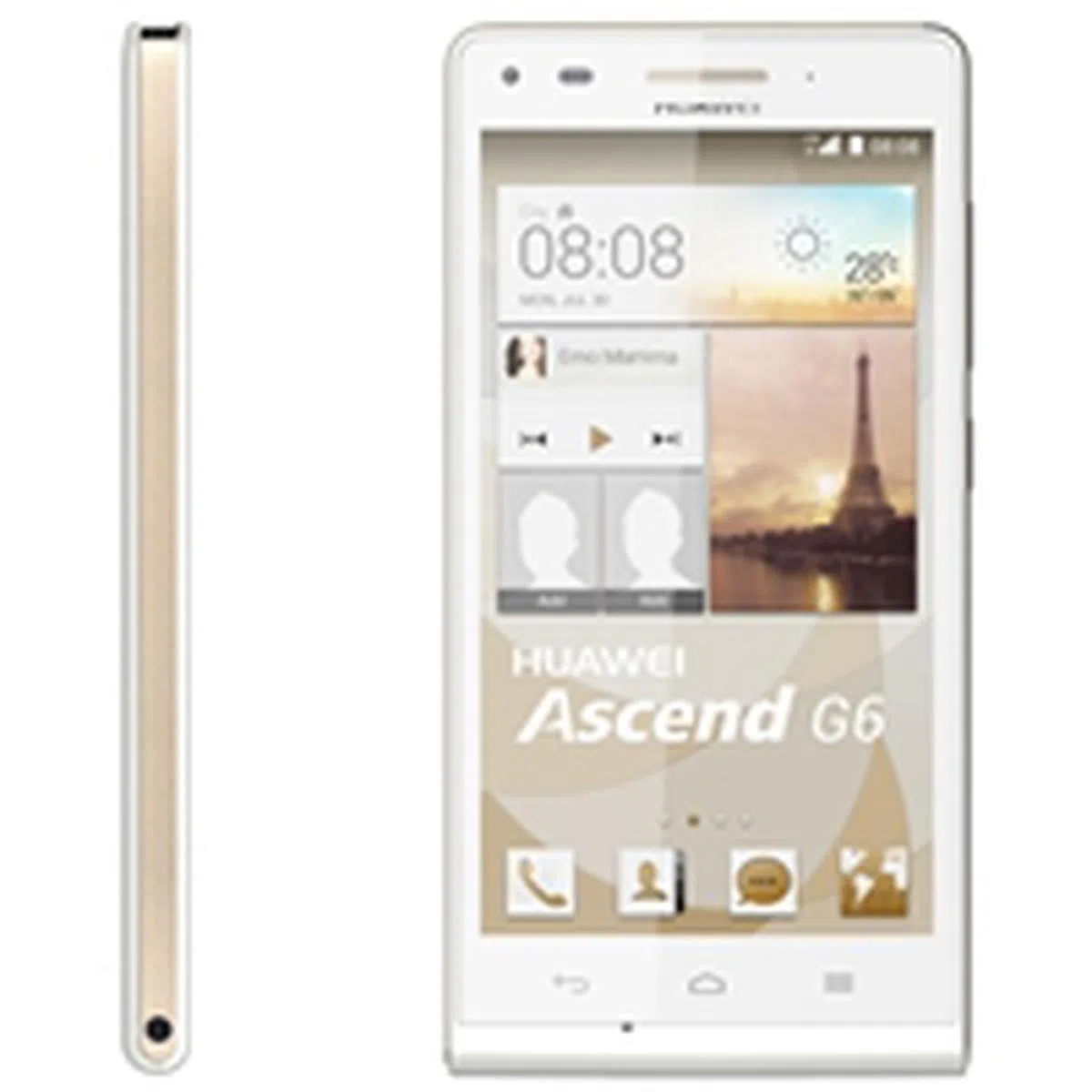 | The Huawei Ascend G6 4G is a mixed bag of feelings - some positive, some negative. Huawei wasn't particularly known for its design prowess, but the Ascend G6 4G might change your mind about it. It is the slimmest and lightest device among the phones compared, and sports Huawei's iconic design trait - the curve at the bottom of the device. This seems to be the signature look that Huawei is adopting for its smartphones and it has the potential to stand shoulder to shoulder with the industrial design language of HTC, the OmniBalance design of the Sony Xperia and LG's rear button setup. Unfortunately, its software is not as impressive as its hardware. The Emotion UI is in need of a major update as it looks increasingly dated when compared with HTC Sense 6 and the stock Android interface. It's also a letdown that a recent device like the Ascend G6 4G still runs on Android 4.3 Jelly Bean.Performance-wise, there is room to improve its battery life, but the phone impresses on its imaging prowess, with the second-best imaging quality after Motorola's Moto X. It's also got the most impressive front facing camera if selfies are an important part of your life. Overall, the Huawei Ascend G6 4G comes as a phone to recommend if you're looking for the sleekest, lightest phone with a decent design and excellent imaging quality. Just be sure you can get accustomed to its user interface. | |
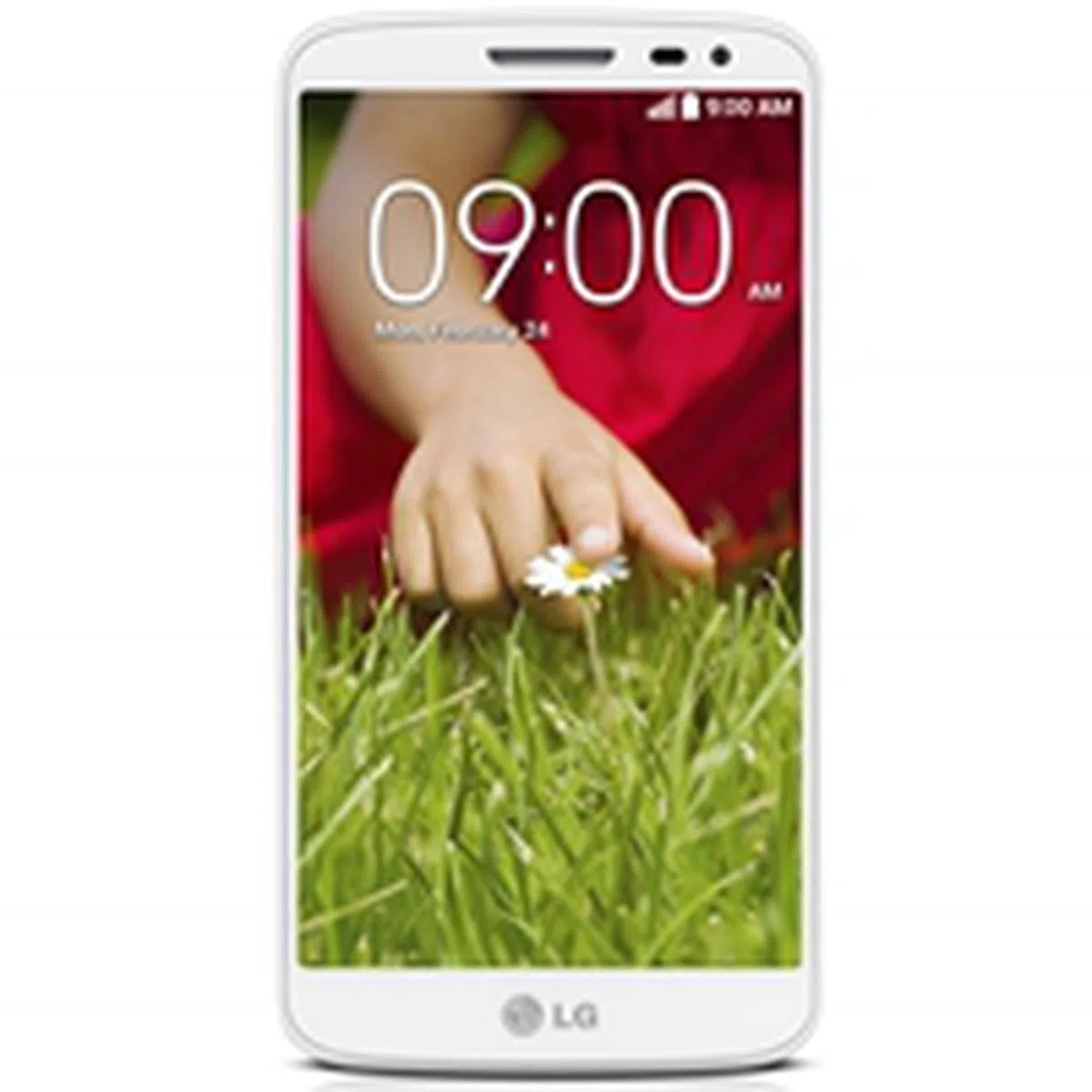 | Similar to HTC, LG is adopting a standardized approach to its smartphones. The G2 Mini LTE has the same rear button setup as the G2, G3, G Flex and G Pro 2 devices although its implementation is questionable on a 4.7-inch form factor. Nonetheless, the lack of physical buttons on the front panel and its sides give the G2 Mini a clean and sleek look. Overall build is also good and the phone is compact and light. In terms of software, the G2 Mini LTE offers a handful of useful features such as Knock Code and runs on a newer Android version (4.4.2 KitKat). One major gripe we have with this device is its qHD display. We couldn't find a reason as to why LG could not put a 720p display on the G2 Mini LTE when Motorola did it for the Moto X. More so when the phone is almost as costly as the Moto X. Perhaps LG is trying to balance between screen display and battery mileage, which is evident in our tests when the G2 Mini emerged third in battery life. The LG G2 Mini LTE comes off as a phone built with design and usability in mind, but it falls short on delivering value. | |
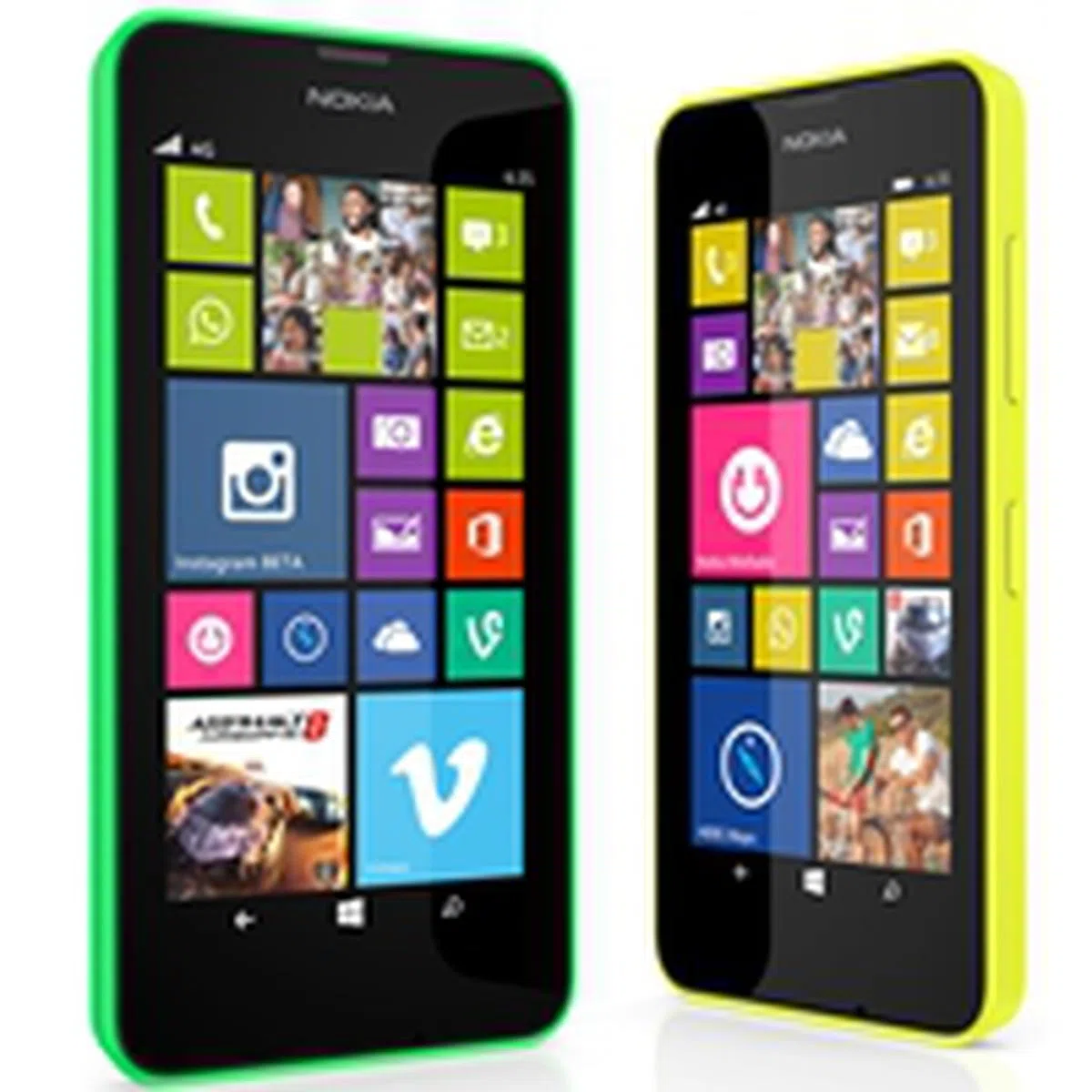 | The Lumia 635 is dubbed by Nokia as the most affordable 4G smartphone, but that comes at a price (no pun intended). Its hardware isn't comparable to the competition; 512MB RAM, a low display resolution of 854 x 480 pixels and a small battery capacity of 1,830mAh. Thankfully, the lightweight Windows Phone platform does not require as much system resources to deliver a smooth user experience. With Windows Phone 8.1, managing notifications and quick access to settings offer an Android/iOS-like interface. Its display resolution is low yet acceptable for its price point. And if it is equipped with a higher resolution panel, the 1,830mAh battery might not be able to provide the mileage you require. At S$239, the Lumia 635 is at least S$150 cheaper than its Android counterparts, and is a good buy for first time smartphone users looking for 4G connectivity as a must-have in their checklist. Do note that the features are so bare that there's no front facing camera, but it does have 128GB microSD support. | |
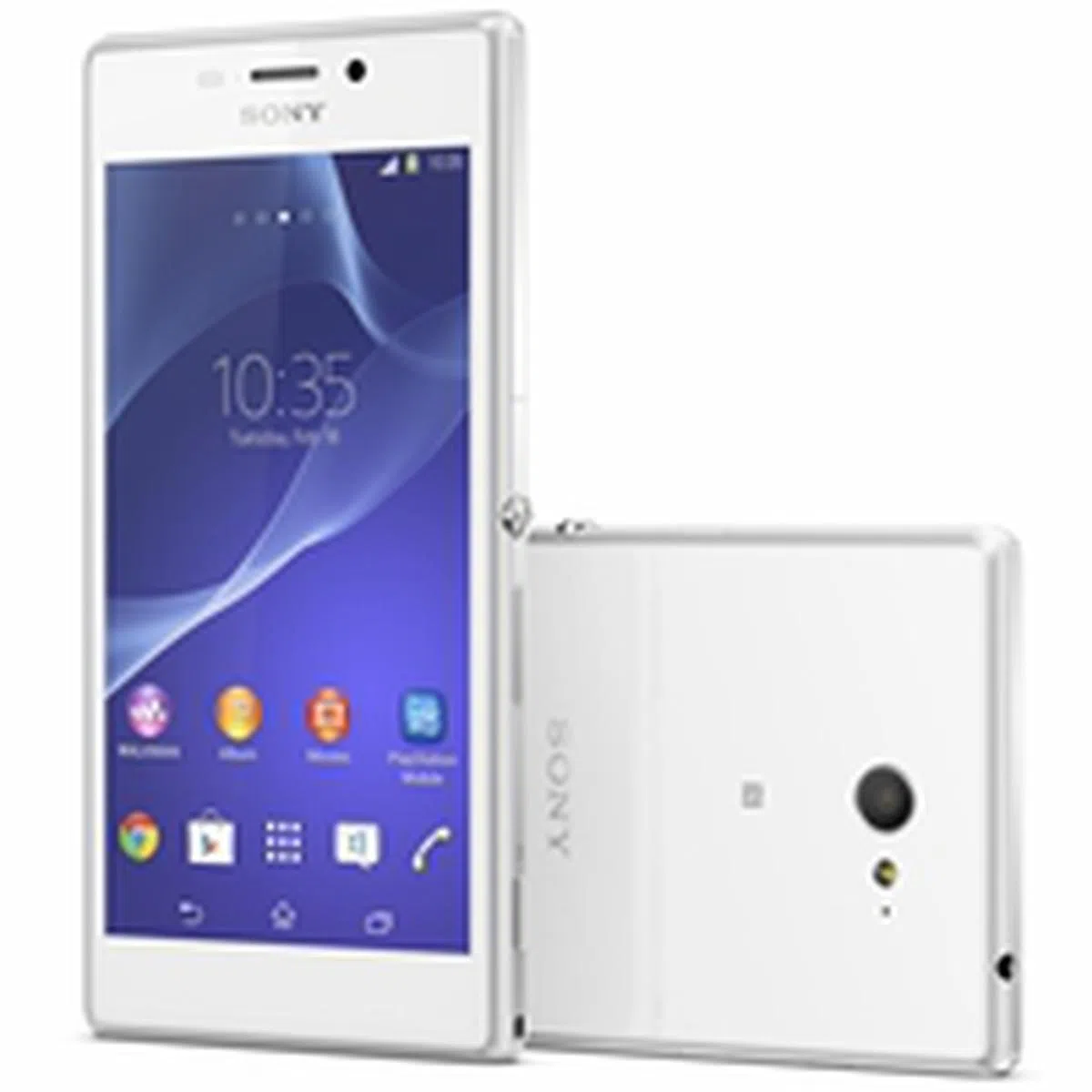 | In a nutshell, the Xperia M2 is a pared-down model of Sony's flagship smartphones. While it inherits part of the OmiBalance design, the Xperia M2 lacks the rear glass panel and water/dust resistance capabilities due to cost considerations. It's quite a pity to see the Xperia M2 struggling to stand out in this shootout despite the fact that it has the biggest display. It still runs on Android 4.3 Jelly Bean, which shouldn't be the case since four other manufacturers managed to ship newer software versions.Its battery performance is average at best and could have been better considering it has a sizable battery capacity. It's also let down by poor imaging quality, something we didn't expect from a Sony phone. Also, don't count on its front facing camera for good selfies with its VGA resolution sensor. So why would you want to get a Xperia M2? Only if you are a believer in the brand, its design, the large screen and the straightforward UI. It's not expensive, but there are better options for the same price that deliver better. | |
Our articles may contain affiliate links. If you buy through these links, we may earn a small commission.


